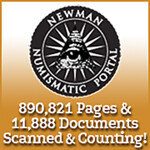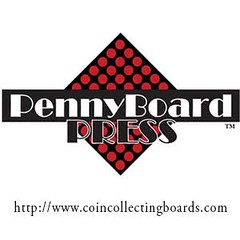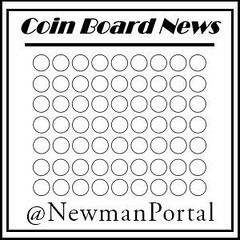
About UsThe Numismatic Bibliomania Society is a non-profit organization devoted to the study and enjoyment of numismatic literature. For more information please see our web site at coinbooks.org SubscriptionsThose wishing to become new E-Sylum subscribers (or wishing to Unsubscribe) can go to the following web page link MembershipThere is a membership application available on the web site Membership Application To join, print the application and return it with your check to the address printed on the application. Print/Digital membership is $40 to addresses in the U.S., and $60 elsewhere. A digital-only membership is available for $25. For those without web access, write to: Terry White, Treasurer AsylumFor Asylum mailing address changes and other membership questions, contact Terry at this email address: terrywhite5475@yahoo.com SubmissionsTo submit items for publication in The E-Sylum, just Reply to this message, or write to the Editor at this address: whomren@gmail.com BUY THE BOOK BEFORE THE COINSale Calendar
|
- WAYNE'S WORDS: THE E-SYLUM FEBRUARY 19, 2017
- NEW BOOK: U.S. MINT 2016 ANNUAL REPORT
- NEW BOOK: THE UPPER CANADA COPPERS, 1815-1841.
- NEW BOOK: MINING COINS AND MEDALS
- JOURNAL OF EAST ASIAN NUMISMATICS JANUARY 2017
- THE FIRST ARTICLE ON AMERICAN COINS
- 2017 BYZANTINE COINS AND SEALS SUMMER PROGRAM
- ANS MONEY TALK: BEGINNINGS OF ISLAMIC COINAGE
- 2017 PNG AWARD NOMINATIONS SOUGHT
- NEWMAN PORTAL INCLUDES THE FARE BOX
- THE WASHINGTON UNIVERSITY ALUMNI MEDAL
- NOTES FROM E-SYLUM READERS: FEBRUARY 19, 2017
- ANA EXPANDS ONLINE OFFERINGS
- VOCABULARY TERM: MULTIPLE STRIKE
- JOSEPH COLVIN RANDALL, JR. (1832-1901)
- T. HARRISON GARRETT AND EVERGREEN HOUSE
- ROCKEFELLER'S SHINY DIMES
- BRONZE 1982-D SMALL DATE CENT ERROR DISCOVERED
- SELECTIONS FROM THE KNIGHT 2017 PCDA SALE
- SELECTIONS FROM DIX NOONAN WEBB 2017 SALES
- NUMISMATIC NUGGETS: FEBRUARY 19, 2017
- THE OLD U.S. TREASURY VAULT
- SPINNER TOKENS
- ROMAN COIN FIND DISPLAYED AT CLIFFE CASTLE
- HUTT RIVER PROVINCE PRINCE ABDICATES
- THE PRIVATE PUFFIN COINAGE OF LUNDY
- 'ROUND POUND' TO BE RETIRED OCTOBER 15, 2017
- CHRISTIE’S TO OFFER NOBEL PEACE PRIZE MEDAL
- OROVILLE DAM BURGLARS STEAL VET'S MEDALS
- MODERN BOODLE LETTERS
- INDIA'S NEW NOTES ALREADY BEING COUNTERFEITED
- MAO'S MOLE: BANKNOTE ERROR REPORTED IN CHINA
- BANK OF ENGLAND STICKING WITH ANIMAL-FAT NOTES
- HINDUS UPSET OVER POLYMER NOTE DECISION
- MOLDOVA ART EXHIBIT ILLUSTRATES FRAUD SCALE
- CENTURY BILL PROMOTES UCONN 100TH WIN
- NEW YORK PUBLIC LIBRARY READING ROOM NOW READY
- ANCIENT STRUCTURE DEFACED WITH ANCIENT COIN
- FEATURED WEB PAGE: ROYAL MINT OF HUTT RIVER
Click here to access the complete archive
To comment or submit articles, reply to whomren@gmail.com
Content presented in The E-Sylum is not necessarily researched or independently fact-checked, and views expressed do not necessarily represent those of the Numismatic Bibliomania Society.
WAYNE'S WORDS: THE E-SYLUM FEBRUARY 19, 2017
New subscribers this week include: Kim Kiick, Executive Director of the American Numismatic Association, Andrew Burnett, and Westley Strange. Welcome aboard! We now have 2,651 subscribers.
Thank you for reading The E-Sylum. If you enjoy it , please send me the email addresses of friends you think may enjoy it as well and I'll send them a subscription with your compliments. Contact me at whomren@gmail.com anytime regarding your subscription, or questions, comments or suggestions about our content.
This week we open with three new books, a periodical issue, the first article on American coins, and programs on Byzantine and Islamic coinage.
Other topics this week include The Fare Box, T. Harrison Garrett, J. Colvin Randall, the old U.S. Treasury vault, spinner tokens, Hutt River Province coinage, modern boodle letters, Bear island and the Puffin coins of Lundy.
To learn more about the Mint's Artist Portal, the Upper Canada Coppers, ‘Morgan’s’ Sixpence, Randall numbers, multiple strikes, Mao's mole, Taiping Silver Cash Coins, the Robert Friedberg Award, Coinage of the Lords Justices, and Rockefeller's shiny dimes, read on. Have a great week, everyone!
Wayne Homren
Editor, The E-Sylum
NEW BOOK: U.S. MINT 2016 ANNUAL REPORT
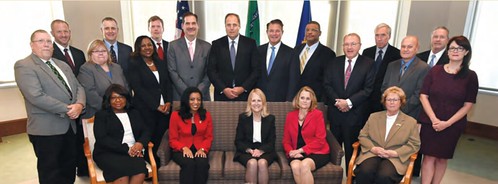
Front row, left to right: Annie Brown, Associate Director, Workforce Solutions Directorate; Elisa Basnight, Chief of Staff; Jean Gentry, Chief Counsel; Margaret (Peggy) Yauss, Acting Associate Director for Finance; Ellen McCullom, Superintendent, West Point Mint.
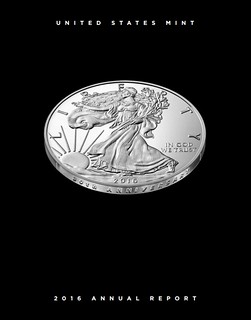 Back row, left to right: Dave Motl, Acting Deputy Director for Management; David Jacobs, Superintendent, San Francisco Mint; Lauren Buschor, Associate Director, Information
Technology Directorate; Randall Johnson, Superintendent, Denver Mint; Betty Birdsong, Acting Director, Legislative and Intergovernmental Affairs; Eric Anderson, Executive Secretary; Marc Landry,
Superintendent, Philadelphia Mint; Matthew (Rhett) Jeppson, Principal Deputy Director; Richard (Dick) Peterson, Deputy Director for Manufacturing and Quality; B. B. Craig, Associate Director for
Environment, Safety, Health and Energy; Thomas Jurkowsky, Chief, Corporate Communications; Jon Cameron, Acting Associate Director, Numismatic and Bullion Directorate; Dennis O’Connor, Chief, Mint
Police; David Croft, Associate Director, Manufacturing Directorate; April Stafford, Chief, Design Management.
Back row, left to right: Dave Motl, Acting Deputy Director for Management; David Jacobs, Superintendent, San Francisco Mint; Lauren Buschor, Associate Director, Information
Technology Directorate; Randall Johnson, Superintendent, Denver Mint; Betty Birdsong, Acting Director, Legislative and Intergovernmental Affairs; Eric Anderson, Executive Secretary; Marc Landry,
Superintendent, Philadelphia Mint; Matthew (Rhett) Jeppson, Principal Deputy Director; Richard (Dick) Peterson, Deputy Director for Manufacturing and Quality; B. B. Craig, Associate Director for
Environment, Safety, Health and Energy; Thomas Jurkowsky, Chief, Corporate Communications; Jon Cameron, Acting Associate Director, Numismatic and Bullion Directorate; Dennis O’Connor, Chief, Mint
Police; David Croft, Associate Director, Manufacturing Directorate; April Stafford, Chief, Design Management.
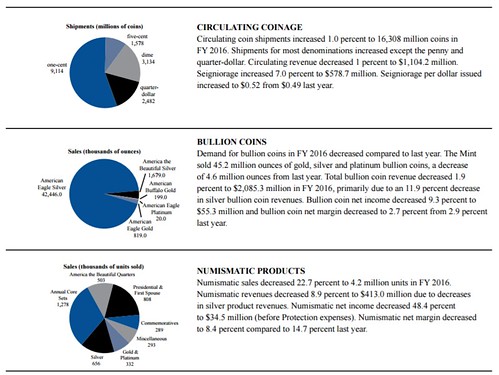
CIRCULATING RESULTS FY 2016 circulating coin shipments to the FRB increased by 1.0 percent to a total 16.3 billion coins compared to last year. The year saw increases in all denominations except the penny and quarter-dollar, which resulted in a modest decrease in revenue compared to last year.
The overall shipment mix stayed relatively flat for all denominations in FY 2016. As a percentage of total shipments, penny and quarter shipments decreased by 2.0 percent, while nickels and dimes increased by 2.0 percent.
BULLION RESULTS In FY 2016, the Mint sold 45,163 thousand ounces of bullion, a decrease of 4,585 thousand ounces or 9.2 percent compared to FY 2015, which was a record-breaking year for bullion. Because of lower bullion demand, FY 2016 bullion coin program revenue and net income decreased compared to FY 2015. Revenue totaled $2,085.3 million, down 1.9 percent from $2,126.1 million last year. Net income decreased 9.3 percent to $55.3 million from $61.0 million, driven by American Eagle Silver Bullion earnings, which decreased $4.1 million (11.9 percent).
Bullion demand surged from January through May of FY 2016, driven by increases in American Eagle Silver Bullion Coin ounces. However, starting in June, silver demand experienced a dramatic slowdown. The decrease in total bullion revenue was more modest than the volume declines because there was a $46.1 million (3.7 percent) increase in gold bullion revenue.
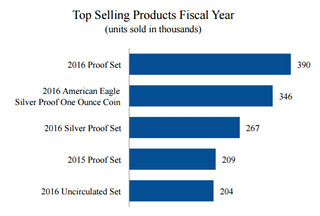 NUMISMATIC RESULTS Numismatic product sales decreased to 4.2 million units in FY 2016 compared to 5.4 million units in FY 2015. Silver coin product sales were 54.3 percent lower than
last year, due to the late release of the American Eagle Silver products as a result of new legislative requirements for 30th anniversary edge lettering. American Eagle Silver contributed 6.0 percent
of overall numismatic revenue in FY 2016, compared to 8.0 percent last year.
NUMISMATIC RESULTS Numismatic product sales decreased to 4.2 million units in FY 2016 compared to 5.4 million units in FY 2015. Silver coin product sales were 54.3 percent lower than
last year, due to the late release of the American Eagle Silver products as a result of new legislative requirements for 30th anniversary edge lettering. American Eagle Silver contributed 6.0 percent
of overall numismatic revenue in FY 2016, compared to 8.0 percent last year.
Numismatic revenue was also lower than last year. FY 2016 numismatic revenue was $413.0 million, a $40.2 million (8.9 percent) decrease from FY 2015 because of a $45.3 million decrease in revenue from silver coin products. The American Eagle Silver One Ounce Proof Coin contributed $25.8 million to revenue this year, which was $10.7 million (29.3 percent) lower than FY 2015.
The 2016 United States Mint Proof Set and the 2016 American Eagle Silver One Ounce Proof Coin were the most popular sellers (in terms of units) this year, selling a combined 736 thousand units. Sales for these products were 25.4 percent lower than they were last year.
MINT LAUNCHES ARTIST PORTAL
A cross-functional Mint team led by the DSS Program Management Office successfully launched the Artist Portal, a solution to host current and future Mint coin design competitions online. The Artist
Portal provides public information about the competitions, facilitates artist interactions, and enables judges from the Citizens Coin Advisory Committee and the Committee of Fine Arts to receive and
score submissions in a secure online environment.
The Portal made its debut in February 2016, with the Mint’s 2018 World War I American Veterans Centennial Silver Dollar Commemorative Coin design competition, and subsequently supported the 2018 Breast Cancer Awareness Commemorative Coin design competition. The Portal will also be used to support future Mint design competitions and Calls for Artists, such as the Artistic Infusion Program.
To read the complete report, see:
United States Mint 2016 Annual Report (https://www.usmint.gov/downloads/about/
annual_report/2016AnnualReport.pdf)
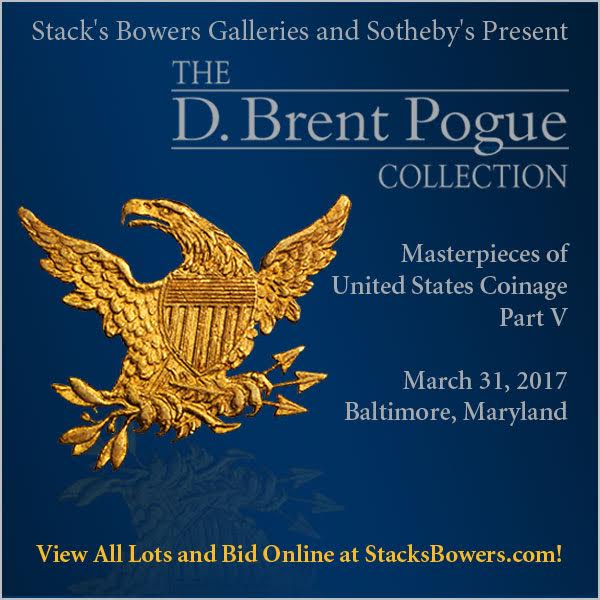
NEW BOOK: THE UPPER CANADA COPPERS, 1815-1841.
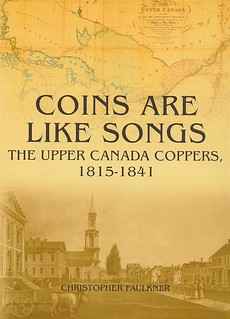 Christopher Faulkner. Coins Are Like Songs: The Upper Canada Coppers, 1815-1841. London: Spink, 2017. xxi, 418 pages. CAD $115.00 / USD 95.00
Christopher Faulkner. Coins Are Like Songs: The Upper Canada Coppers, 1815-1841. London: Spink, 2017. xxi, 418 pages. CAD $115.00 / USD 95.00
This is the first study in 100 years to be devoted to the copper tokens which were issued for circulation in Upper Canada between 1815 and 1841, the date of the formation of the Province of Canada.
The book is in two parts. Much of the General Introduction is devoted to establishing something of the historical context – social, economic, and cultural – in which the Upper Canada coppers were issued and circulated. To that end, it is important to understand the growth and size of settlements in Upper Canada, of whom their populations consisted, in what occupations and leisure activities those populations were engaged, along with the economic foundations which led to trade and commerce and created the conditions necessary for the appearance of copper tokens. The second part of the book is a descriptive catalogue of the various copper tokens known to have been issued for use in Upper Canada. Much new information is introduced.
Separate chapters are devoted to the Lesslie tokens, the Brock coppers, the Sloop tokens, and the Miscellaneous tokens. Tokens are recorded by die variety and, for the first time, die states are identified. Also for the first time, emission sequences are proposed for a number of issues. An auction and fixed price sales record is provided for many pieces, including classics in the Upper Canada series such as the Lesslie 2d, the Brock mule, and the Jamaica Cask. Almost every token is illustrated and its specifications provided. There is also discussion of where the Upper Canada tokens were struck, by whom and when they were issued, and where exactly and for what period of time they circulated.
The title of this book comes from a remark by John MacTaggart, who spent three years in Upper Canada between 1826 and 1828 working with Colonel John By on the Rideau Canal between Ottawa and Kingston. MacTaggart observed that “the very coins of a realm, like the songs, affect its character. The emblems on the current coins of Canada help to make Yankees of the Colonists.” His complaint was directed at “silver coins having eagles, stars, and emblems of liberty stamped upon them.” MacTaggart seems to have equated the ubiquity of American coins in Upper Canada with republican propaganda against the British Crown. But the claim that “coins are like songs” conveys something more and something wider than the narrowest propaganda. A theme throughout this book is that coins – or copper tokens – are like popular songs because they sing their meaning everywhere and to all who hold them in their hands. They evoke a whole world, a world of farmers and merchants, artisans and labourers, which was particular to Upper Canada. Part of the goal in this book is to try and recreate through the copper tokens that were in use between 1815 and 1841 something of that world. What the tokens sing are the songs of people’s lives and labours. There is a social and cultural importance which attaches to Canada’s early currency as well as a political and economic importance. Numismatics can offer us a window onto social and cultural history as much as it can onto political or monetary history.
Research has been enabled by means of generous access to private and public collections and private and public libraries and archives.
The book is available in North America from Sveto Kovacevic at Ancient Numismatic Enterprise, www.anecoins.ca or by emailing ane@vcoins.com
For more information, see the Spink site:
Coins Are Like Songs: The Upper Canada Coppers 1815-1841 by Faulkner, C.
(https://spinkbooks.com/index.php?route=product/product&path=59&product_id=288)
NEW BOOK: MINING COINS AND MEDALS
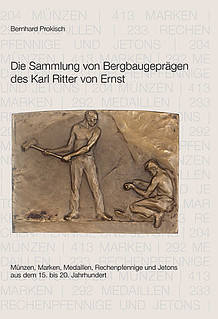 Publications of the Institute of Numismatics and Money History 17
Publications of the Institute of Numismatics and Money History 17
Bernhard Prokisch
The collection of mining impressions of Karl Ritter von Ernst. Coins, stamps, medals, raffles and tokens from the 15th to 20th century 476 pages, 210 x 297 mm, paperbound ISBN
978-3-9501987-6-8 (ÖFN) and 978-3-902183-24-8 ( TMW), price € 68, - plus postage.
In August 2016, after a long period of preparation, the band appeared in our series "Publications of the Institute of Numismatics and Money History". It contains the stock catalog of a collection of mining impressions, which in the later 19th and early 20th century was brought together by the mining engineer and the high ministerial staff Karl Ritter von Ernst (* 1833, † 1911) and after his death via detours into the Technical Museum Vienna. The largely completely preserved collection contains a total of 1142 coins, medals, stamps and rake pennants, all relating to the mining industry. The main focus of the collection is on monuments from the Austro-Hungarian monarchy and the German Reich, but is supplemented by material from the different mining areas of Europe and outside Europe. Even though the collection does not reach the large mining collections (Schmula-Krappitz, Vogelsang, Preussag AG), it contains a number of remarkable, including so far unknown pieces.
The work on the collection began with two courses in the winter semester 2007 and summer semester 2009, during which part of the material could be determined and cataloged. In the following years, the catalog was completed and the collection history clarified. Particular attention was paid to the personality of the collector, who is one of the Austrian numismatics, who are largely forgotten by now. Apart from his collecting activity, he was often active as a journalist (the publication list listed in the book has an impressive scope), and worked on the board of the Viennese Numismatic Society in Vienna, among the founding members of which he was a founder. He also served as editor of the "Numismatic Magazine" and the "Monatsblatt" for many years.
Karl von Ernst was thus an exponent of that upscale middle class of the second half of the nineteenth and early twentieth centuries, which - scientifically and liberally oriented - combined scientifically oriented collection activities with social commitment and literary work.
The book was realized in close collaboration between the Technical Museum of Vienna and the institute, financing was achieved not least through private support.
The company, which has now been closed with the publication, can be regarded as a successful cooperation between the University of Vienna and one of the leading federal museums. We would like to thank Dr. Helmut Lackner, Dr. Susanna Heinz, and Dr. Ursula Emesz, the scientific deputy of the management of the Technical Museum, without whom this publication could not have been realized.
To read the CoinsWeekly article, see:
The collection of mining coins and medals of Karl Ritter von Ernst
(www.coinsweekly.com/en/News/The-collection-of-mining-coins-and-medals-of-Karl-Ritter-von-Ernst/4?&id=4536)
For more information, or to order, see:
Publications of the Institute of Numismatics and Money History 17
(http://numismatik.univie.ac.at/institut/veroeffentlichungen-des-instituts-fuer-numismatik/vin-17/)

JOURNAL OF EAST ASIAN NUMISMATICS JANUARY 2017
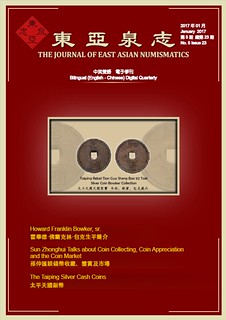 Welcome to the 5th edition of the Journal of East Asian Numismatics. In this issue we feature an article on the biography of the famous numismatic researcher Howard Franklin Bowker.
Some of the coins from the Howard Franklin Bowker East Asian Collection, that were donated to the Moritzberg Museum at Halle, Germany, will be on exhibit at the World Money Fair Berlin held February
3-5 at the Estrel Hotel Convention Center.
Welcome to the 5th edition of the Journal of East Asian Numismatics. In this issue we feature an article on the biography of the famous numismatic researcher Howard Franklin Bowker.
Some of the coins from the Howard Franklin Bowker East Asian Collection, that were donated to the Moritzberg Museum at Halle, Germany, will be on exhibit at the World Money Fair Berlin held February
3-5 at the Estrel Hotel Convention Center.
Mr Yuan Shui Qing, our Chinese Editor, has submitted an article in which he interviews Chinese Cash Coin expert and senior researcher Sun Zhong Hui, formerly with the Shanghai Museum.
In this issue we welcome a guest article about Chinese Sychee by Thomas Uhlmann, a researcher from Germany. Steve Feller, former longtime editor of the International Banknote Society Journal, has submitted another interesting article about his physics and numismatics trips to China.
Our Senior Editor, Bruce Smith, has an article on Taiping Silver Cash Coins which should be very interesting for our readers on this important series. The former Senior Engraver of the Shanghai Banknote Printing and Minting Zhao Qi Ming provided an article based on the background to the engraving of a Macau Banknote plate. Wang Li Yan submitted a study of the Gong Tun Chi Jin round coin.
To read previous issues, see:
The first issue of Jean link (http://issuu.com/jean388/docs/the_first_issue_of_jean) The second issue of Jean link (http://issuu.com/jean388/docs/the_second_issue_of_jean) The third issue of Jean link (http://issuu.com/jean388/docs/the_third_issue_of_jean) The fourth issue of Jean link (http://issuu.com/jean388/docs/the_fourth_issue_of_jean)
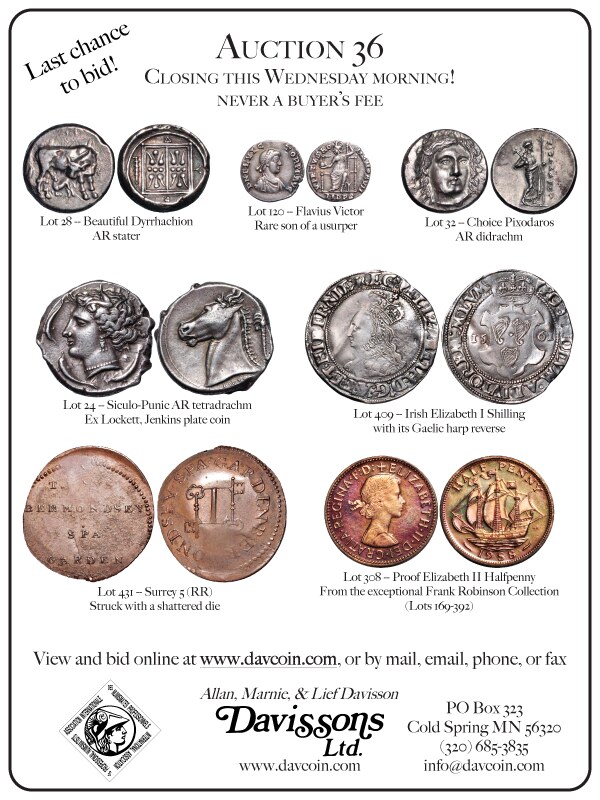
THE FIRST ARTICLE ON AMERICAN COINS
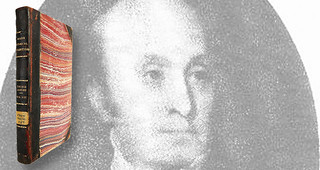 Numismatic literature continues to provide rich opportunities for collectors to purchase rare and important items at relatively reasonable prices (especially compared to coins).
Numismatic literature continues to provide rich opportunities for collectors to purchase rare and important items at relatively reasonable prices (especially compared to coins).
While several key players have dropped out of the rare numismatic book market in the past few years, the partnership of George Kolbe and David Fanning continues to produce impressive auctions, including Kolbe & Fanning Numismatic Booksellers’ 2017 auction held on Jan. 14 in conjunction with the New York International Numismatic Convention.
The firm noted in the introduction that while the world has changed since its first NYINC auction in 1982, “our shared love of the historic and the beautiful, the original and the authentic, remains the same.”
Here is one of three recently sold numismatic books profiled in this Market Analysis:
The Lot:
The first article on American coins published in America, by James Mease, 1838
The Price:
$944
The Story:
A work of numismatic literature need not be long to be important. The first article on American coinage was published as part of the book Collections of the Massachusetts Historical Society,
Third Series, Volume VII in 1838. James Mease’s article “Old American Coins” is considered by most to be the first numismatic article on American coins published in America.
As Eric P. Newman published in the summer 1992 issue of the Numismatic Bibliomania Society’s publication The Asylum, Mease’s brief chapter remains important for helping numismatists understand circulating value of Connecticut coppers, among other things.
Mease published on a variety of subjects ranging from geology to medicine; for example his 1811 book Picture of Philadelphia describes the operations of the United States Mint.
The 1838 volume offered at Kolbe & Fanning on Jan. 14 featured an impressive 19th century brown leather binding with marbled endpapers and was described as having unusually fresh and clean pages. It sold a bit below its estimate of $1,200, at $944.
To read the complete article, see:
Book with the first article on American coins a winner in
auction (www.coinworld.com/news/us-coins/2017/02/first-united-states-coins-article-published-sold-kolbe-fanning-auction.html#)
2017 BYZANTINE COINS AND SEALS SUMMER PROGRAM
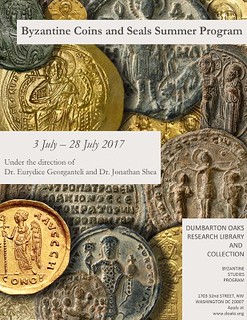 2017 Byzantine Coins and Seals Summer Program
2017 Byzantine Coins and Seals Summer Program
July 3 to 28, 2017
2017 Coins and Seals Poster
Coins and seals offer priceless insight into the historical geography, prosopography, paleography, art history, theology, and economic, institutional, and administrative history of the Byzantine world. Dumbarton Oaks’ collections of twelve thousand coins and seventeen thousand lead seals form the finest, largest, and most comprehensive specialized assemblages in the world.
For nearly two decades, the Byzantine Coins and Seals Summer Program has provided opportunities for students to have access to these unparalleled collections. Dumbarton Oaks will offer the summer program again this summer, from July 3 to 28, 2017, under the direction of Dr. Eurydice Georganteli (History of Art and Architecture, Harvard University) and Dr. Jonathan Shea (Dumbarton Oaks and George Washington University).
Admission Requirements
Applications from doctoral students in any area of Byzantine studies, junior faculty members teaching at least one course in Byzantine studies at a college or university, or junior curators with
responsibility for Byzantine objects will be given highest priority. Other complete applications may be considered on a case-by-case basis if space is available.
Acceptance is contingent on verification of the applicants’ status as doctoral student, junior faculty, or junior curator. Two years of college-level Classical Greek (or its equivalent) is required for participation in the program and reading knowledge of French and German is highly desirable.
Accommodation and Expenses
Successful applicants receive a grant package, which includes accommodation (except for anyone already living in the greater Washington area), lunch on weekdays in the Refectory, and a library
reader’s pass for the duration of the course. There is no fee for participation in the program, but participants are responsible for their own transportation costs.
Program Description
The program will include seminars, afternoon work on research reports, and opportunities to view items from the Dumbarton Oaks collections.
Seminars will introduce the basics of the disciplines of numismatics and sigillography, including bibliography and the use of coins and seals as evidence for Byzantine political, economic, and art history. Students will be instructed how to read and date Byzantine coins and seals and write a catalogue entry. A variety of special topics will also be examined. In previous programs, such topics have included photography of seals and coins, digital imaging, epigraphic fonts, construction of maps, construction of databases, use of Photoshop, and electronic programs for statistical analysis.
Participants will also work on and present an original piece of research based on numismatic and/or sigillographic material, which they will coordinate with the program faculty.
Application Process
Applicants must send a letter by February 20, 2017, to Professor Elena Boeck, Director of Byzantine Studies at Dumbarton Oaks:
1703 32nd St. NW
Washington, D.C. 20007
byzantine@doaks.org
For more information, see:
2017 Byzantine Coins and Seals Summer Program
(www.doaks.org/research/byzantine/scholarly-activities/2017-coins-and-seals-summer-school)
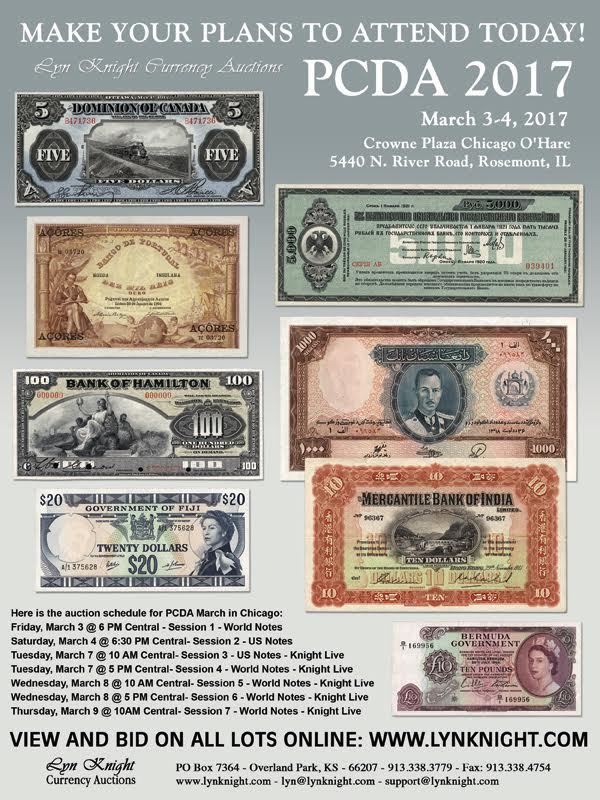
ANS MONEY TALK: BEGINNINGS OF ISLAMIC COINAGE
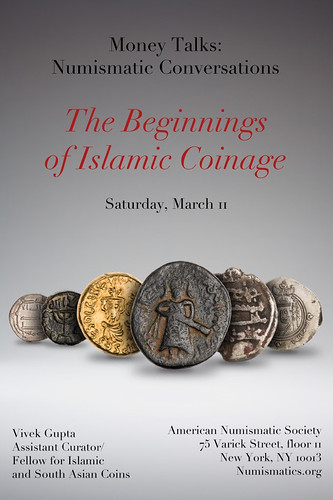
This talk introduces members to the beginnings of Islamic coinage in the seventh century and its vast trajectories within the Arab lands and beyond. It begins with an in-depth survey of its Byzantine and Sasanian precedents and provides a basic outline of “Arab-Sasanian” and “Arab-Byzantine” types. Members will also learn about the styles of Arabic calligraphy that were used on early Islamic coins. Members will be able to view and handle fine examples of the ANS’s Islamic holdings with Assistant Curator, Vivek Gupta.
ANS Members: $20, non-members: $50
RSVP to:
Catherine DiTuri, cdituri@numismatics.org, 212-571-4470 ext. 117
Gilles Bransbourg, bransbourg@numismatics.org, 212-571-4470 ext. 156
For more information, see:
http://numismatics.org/moneytalks/
2017 PNG AWARD NOMINATIONS SOUGHT
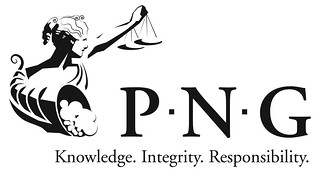 Nominations now are being accepted for the 2017 Professional Numismatists Guild (www.PNGdealers.org) awards, according to PNG Executive Director Robert Brueggeman and President Dana
Samuelson. "Each year the PNG publicly recognizes outstanding achievements in the hobby and the profession by honoring deserving recipients with awards in a half dozen categories. We cordially
welcome and strongly encourage nominations from all collectors and dealers," said Brueggeman. "The award winners will be announced at the annual PNG Day banquet that will be held following
the PNG/ANA Numismatic Trade Show in Denver Colorado on July 31, 2017.
Nominations now are being accepted for the 2017 Professional Numismatists Guild (www.PNGdealers.org) awards, according to PNG Executive Director Robert Brueggeman and President Dana
Samuelson. "Each year the PNG publicly recognizes outstanding achievements in the hobby and the profession by honoring deserving recipients with awards in a half dozen categories. We cordially
welcome and strongly encourage nominations from all collectors and dealers," said Brueggeman. "The award winners will be announced at the annual PNG Day banquet that will be held following
the PNG/ANA Numismatic Trade Show in Denver Colorado on July 31, 2017.
Robert Friedberg Award: Presented to an author in recognition for an outstanding book or other literature. Named in honor of a publisher and author of numismatic reference books, this award is not automatically given each year. It is only given when there is deemed to be a worthy recipient or recipients. Committee Chair: James A. Simek. Email: nge3@comcast.net. Note: A copy of each book nominated for this year's award must be submitted for delivery no later than June 16, 2017 to James A. Simek, P.O. Box 7157, Westchester, IL 60154- 7157.
To read the complete press release, see:
PNG Calls For 2017 Award Nominations (http://pngdealers.org/png-calls-for-2017-award-nominations/)
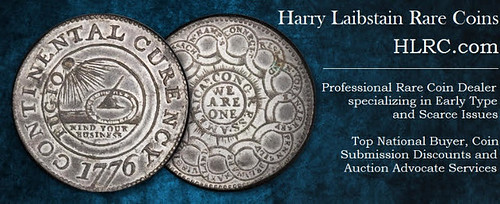
NEWMAN PORTAL INCLUDES THE FARE BOX
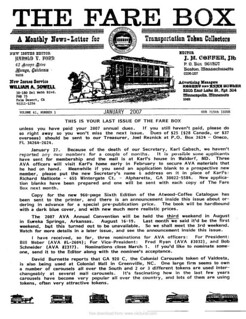 The Fare Box, the journal of the American Vecturist Association (AVA), is now available on the Newman Portal for the years 1947-2007. The Fare Box actually preceded the
founding of the AVA (1948), but was shortly thereafter moved under the Association. John M. Coffee, Jr., history professor at Emerson College in Boston, served as Editor for over 60 years,
undoubtedly the longest such tenure in American numismatics (or any other numismatics, for that matter).
The Fare Box, the journal of the American Vecturist Association (AVA), is now available on the Newman Portal for the years 1947-2007. The Fare Box actually preceded the
founding of the AVA (1948), but was shortly thereafter moved under the Association. John M. Coffee, Jr., history professor at Emerson College in Boston, served as Editor for over 60 years,
undoubtedly the longest such tenure in American numismatics (or any other numismatics, for that matter).
For those not familiar with the AVA, a vecturist is a collector of transportation tokens, and The Fare Box has ably covered this field on a monthly basis for nearly three-quarters of a century. Vecturists pursue transportation, parking, and car wash tokens, often on a state-by-state basis, similar to other token collecting disciplines. The Newman Portal acknowledges AVA Secretary Peter Irion for his assistance with this project.

Peter Irion adds:
We are excited to have these newsletters as part of the portal and will hopefully be safely preserved forever.
Link to The Fare Box on the Newman Portal:
https://nnp.wustl.edu/library/publisherdetail/516936
American Vecturist Association website:
http://www.vecturist.com/
THE WASHINGTON UNIVERSITY ALUMNI MEDAL
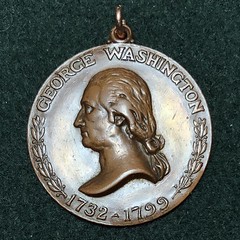
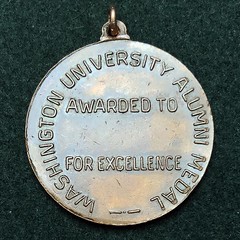
Tokens and medals are a challenging field within numismatics, defying simple classifications and clear definitions of set completion. Collectors gravitate toward well-defined objectives, and within American numismatics one finds more coin collectors than token and medal aficionados. Among the latter, researcher John Sallay has made a specialty of school-awarded medals and has catalogued over 3,000 U.S. examples.
Sallay recently identified a Washington University piece in his collection (here photographed by Sallay) and sought further information from the University. The obverse of this medal depicts George Washington, immediately suggesting an origin date of c. 1932 as the bicentennial of Washington’s birth generated a number of medallic tributes. Sonya Rooney, University Archivist, uncovered the story in the February 1937 Alumni Bulletin, which states in part,
“The awarding of George Washington medals to outstanding students in high schools and junior colleges in the Mississippi Valley is an activity of the Arts and Science alumni that has been growing in size and popularity during the past several years. Last spring thirty-eight of these medals were given out in as many schools…..the idea of this award was conceived by Philo Stevenson, alumni representative, who purchased ten of the medals in 1933….This year the association expects to be able to obtain funds from individuals for about fifteen of the medals, and the alumni association will take care of about thirty…”
The Alumni medal depicted here is unawarded, lacking the recipient’s name that would have been hand engraved on the reverse beneath AWARDED TO. This example may have originated from leftover stock in the Alumni office, or been distributed to an area school but never officially conferred upon a student. The obverse, featuring a bust of Washington but otherwise not associated with Washington University, may also have been paired with a different reverse die than that depicted here.
Sallay has not yet discovered an example of an awarded Washington University Alumni medal. Based on the figures in the Alumni Bulletin, one can reasonably infer a population of a few hundred pieces distributed in the 1930s. Of these, perhaps half survive today, most likely handed down within the families of the original honorees.
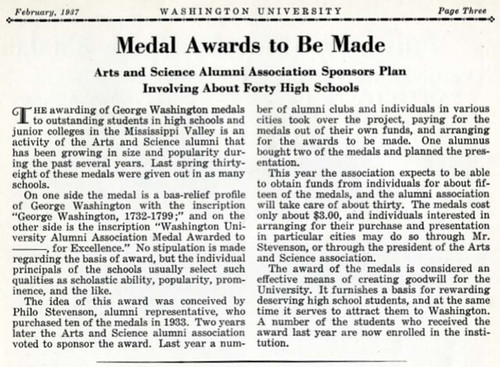
For more information on the history of Washington University in St. Louis, see:
https://wustl.edu/about/history-traditions/

NOTES FROM E-SYLUM READERS: FEBRUARY 19, 2017
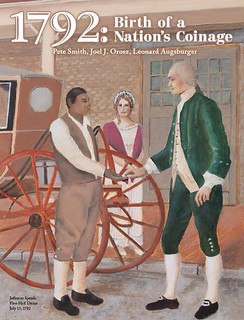
1792: Birth of a Nation's Coinage
Authors Pete Smith, Joel Orosz and Len Augsburger write:
We've received word from Heritage that our new book 1792: Birth of a Nation's Coinage, has been printed. Final details about price and how to order will soon be forthcoming, but for now, we just wanted to let readers of The E-Sylum know that the book will soon be available for purchase.
J.S.G. Boggs: Visible Language
Patrick Perez of the Coin Dealer Newsletter writes:
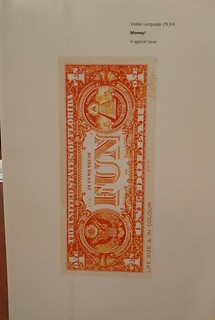 As a follow-up to the recent discussion on J.S.G. Boggs, I have in my library an obscure work that features an article about him and an interview with him. It is in Visible Language
29:3/4, published in 1995, which is titled "Money! / A special issue". Visible Language is a quarterly publication of the Rhode Island School of Design. The cover has an image of one
of the orange FUN $1 notes by Boggs. The article is titled "J.S.G. Boggs: Life Size & in Colour" written by Sandra Smith. It is a very interesting read.
As a follow-up to the recent discussion on J.S.G. Boggs, I have in my library an obscure work that features an article about him and an interview with him. It is in Visible Language
29:3/4, published in 1995, which is titled "Money! / A special issue". Visible Language is a quarterly publication of the Rhode Island School of Design. The cover has an image of one
of the orange FUN $1 notes by Boggs. The article is titled "J.S.G. Boggs: Life Size & in Colour" written by Sandra Smith. It is a very interesting read.
To read the earlier E-Sylum article, see:
BIBLOPHILE BOGGS TRANSACTIONS (www.coinbooks.org/v20/esylum_v20n07a11.html)
California Fractional Gold After 1870
In his biography of Ernest Haquette last week John Lupia wrote:
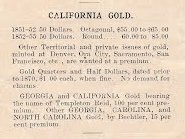 Pages 12-13 of Haquette's Coin Book. Note the warning on California fractional gold pieces stating that, "No demand for charms," and he only sells those prior to 1870.
The implication is that from the 1870's on the fractional gold pieces were not considered worth collecting and deemed to be charms or trinkets. A few years later this view was substantiated by
Henry Russell Drowne in the American Journal of Numismatics, April (1910), and by Edgar Holmes Adams in both The Numismatist, February (1913), and his book on California Pioneer Gold published that
same year.
Pages 12-13 of Haquette's Coin Book. Note the warning on California fractional gold pieces stating that, "No demand for charms," and he only sells those prior to 1870.
The implication is that from the 1870's on the fractional gold pieces were not considered worth collecting and deemed to be charms or trinkets. A few years later this view was substantiated by
Henry Russell Drowne in the American Journal of Numismatics, April (1910), and by Edgar Holmes Adams in both The Numismatist, February (1913), and his book on California Pioneer Gold published that
same year.
Bob Leonard writes:
See California Pioneer Fractional Gold p39 for an explanation of the difference between charms and "genuine" small California gold--and it is not what he claims. Pieces without a denomination are charms (some are even marked charm," beginning in 1872, others advertised as such), though called "tokens" by modern collectors.
In 1871 a maker of small California gold pieces was arrested and charged with violating the Act of June 8, 1864 prohibiting private coinage. Though prosecution was finally abandoned, they ceased production and other makers cut back in various ways, some issuing pieces with the denomination omitted. By 1883 no more denominated pieces were made (until the 20th century, but that is a different story).
So no, pieces with a denomination are considered genuine, regardless of date, and those without are charms or tokens. Haquette is simply saying here that he does not care to stock pieces after 1870, not condemning later ones as charms.
To read the earlier E-Sylum article, see:
ERNEST HAQUETTE (1845-1911) (www.coinbooks.org/v20/esylum_v20n07a15.html)
Ireland Charles I Coinage of the Lords Justices
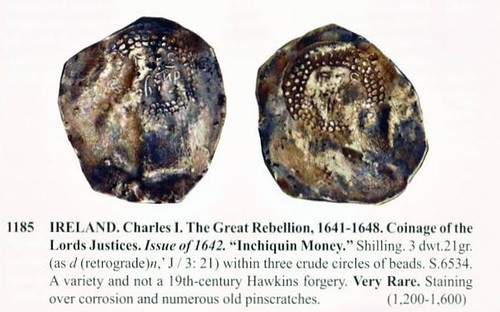
To read the earlier E-Sylum article, see:
NOTES FROM E-SYLUM READERS: FEBRUARY 12, 2017 : Query: Coin Galleries September 2008 Sought
(www.coinbooks.org/v20/esylum_v20n07a08.html)
Numismatic Heaven: The National Numismatic Collection
Martin Kaplan writes:
In the last issue there was an article about digitizing the "the National Numismatic Collection housed at the Smithsonian's National Museum of American History along with other legal tender such as bank notes, tax stamps and war bonds."
A number of years ago I went to "numismatic heaven"...the vault housing the numismatic collection at The Smithsonian. As I remember, I held both the 1849 and 1933 Double Eagles in addition to so many other treasures. Off to the side of the "coin room" is another room. The one pictured in the article with the shelving and flat boxes. I wandered in, not knowing what was in this room. As I remember, the Bureau of Printing and Engraving had transferred their holding to the "coin vault". On the boxes were written the name of each state. I was not a paper money collector but how fascinating to open boxes and carefully look through sheet upon sheet of uncut currency designs. At the time I felt this was the highlight of my visit. It's exciting that this collection is being digitized!
To read the earlier E-Sylum article, see:
SMITHSONIAN'S RAPID CAPTURE DIGITIZATION (www.coinbooks.org/v20/esylum_v20n07a05.html)
On Grading Services
David Gladfelter writes:
I have to disagree with you. "Caveat emptor" ought not to apply to professionally graded items; if it does, the grading services' services are worthless.
Unfortunately, Kavan Ratnatunga's skepticism about slabbed and graded paper is well founded. Too often I have seen notes with parts of the design cut away that have been professionally graded as if they were intact. Such disregard does not generate confidence in the grading services, and does not serve our hobby well. A coin showing no wear would not be graded uncirculated if it were clipped, so why should a note be? So when buying paper, use your eyes.
David Gladfelter adds:
They do a particularly poor job on colonial paper. For example, most surviving New Jersey bills of credit have multiple borders of typeset symbols – leaves, flowers, stars, zodiac symbols, etc. These occur particularly on the higher denominations where the borders are printed in color. Part of a border can be trimmed away, usually by a collector who can’t tolerate a ragged edge. Then the note is slabbed and, because the edge looks clean and straight, the note receives a high grade although it’s not complete. I haven’t kept count but see this often enough that I have to attribute it to willful ignorance on the part of the “experts.” Yes, shame on them! And woe to the hapless buyer who fails to notice, or just doesn’t know.
Here's an example where the grading service got it right. Notice that the outer red border is complete on all four sides. (There’s also an inner black border). Compare the Ford specimen (3:706, plated). A collector (probably not Ford) has trimmed this specimen – the edges are neat, but the right red border is completely gone and only a trace of the left red border remains. (This bill was sold raw; only the left border trim was noted by the cataloger.) To be fair to the grading services, while Newman’s and other catalogs of colonial paper do list every denomination of every issue, I’m not aware of any that illustrates every denomination of every issue. You need a set of auction catalogs for that. So to be fair, if they don’t have a standard to refer to, it may be difficult to determine whether a particular bill is complete or not.
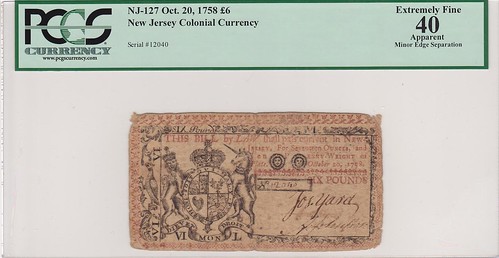
To read the earlier E-Sylum article, see:
QUERY: BANKNOTE GRADING, STAMPS AND OVERSTAMPS (www.coinbooks.org/v20/esylum_v20n07a10.html)
One-Cent Checks
Kavan Ratnatunga of Sri Lanka writes:
Your report on why people write checks got me motivated to ask why Banks write checks.
I have an overdraft account associated with my HSBC account in the USA. With my HSBC account in Sri Lanka, the credit balance just goes negative. In USA it is a separate account from which funds transfer when needed, and I have to transfer funds back into the overdraft account to balance it. I generally add few cents more in case they debit interest.
However, for unknown reasons the Bank does not like me to have a credit balance in my overdraft account, and after a few months wants to get rid of it. But rather than transfer it back to current account writes and posts me a check. And in the case below for one cent. I wonder how much it cost to generate and post me that check. I could not dream of depositing such a collectible into my account. I would much appreciate an explanation from a US banker.
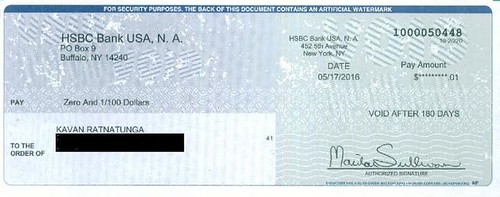
To read the earlier E-Sylum article, see:
SO WHY DO PEOPLE WRITE CHECKS FOR GROCERIES? (www.coinbooks.org/v20/esylum_v20n07a29.html)
2017 ANS Gala Photo Caption
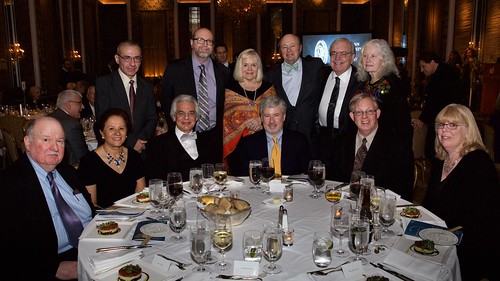
Catherine DiTuri of the American Numismatic Society helped me with the caption for this photo at my table at last month's ANS Gala:
L-R, standing: Lev Tsitrin, David Fanning, Regina and John Adams, Warren and Cathette Plumer
Seated – Frank and Rosie Campbell, John Lupia, John Sallay, Wayne and Dee Homren
To read the earlier E-Sylum article, see:
THE 2017 AMERICAN NUMISMATIC SOCIETY GALA (www.coinbooks.org/v20/esylum_v20n05a23.html)
THE BOOK BAZARRE
ANA EXPANDS ONLINE OFFERINGS
Virtual Exhibits

The ANA's Virtual Exhibits webpage takes popular displays from the Edward C. Rochette Money Museum and makes them available online to enthusiasts around the country and world. Learn about the museum's spectacular rarities, explore a wide range of historical subjects, and expand your collecting knowledge and interests. These virtual exhibits allow you to view high resolution images and detailed information about fascinating numismatic objects.
- A House Divided: Money of the Civil War
- The Bebee Collection
- Colorado Numismatic History
- The Continental Dollar of 1776
- 1804 Dollar
- 1913 Nickel
- Colorado Gold
- Morgan Dollars
- Counterfeiting
-Editor
To read Virtual Exhibits online, see:
www.money.org/money-museum/virtual-exhibits
Tales From the Vault
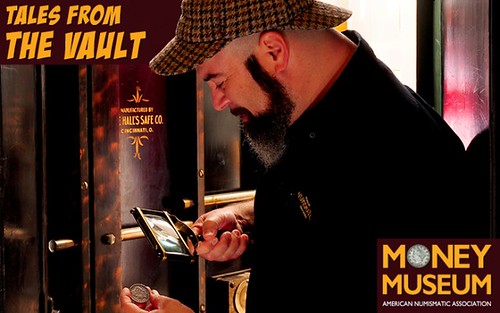
Tales from the Vault is a series of articles designed to highlight the lesser-known parts of the ANA collection.
These columns feature interesting and informative stories about individual objects or groups of objects that do not often (or ever) get to see the light of day.
The collection within the ANA vault holds approximately 275,000 objects ; however, we only have space to show a tiny fraction of these hidden gems. Check back regularly for an inside look at the ANA vault and the marvelous collection we are excited to share with you.
To read Tales From the Vault online, see:
www.money.org/tales-from-the-vault
Museum Collection
The Museum Collection is a look at the individual numismatic pieces in the Edward C. Rochette Money Museum's vaults. This page will feature continuously updated material as the museum staff
photographs and catalogs the museum collection for this digital archive.
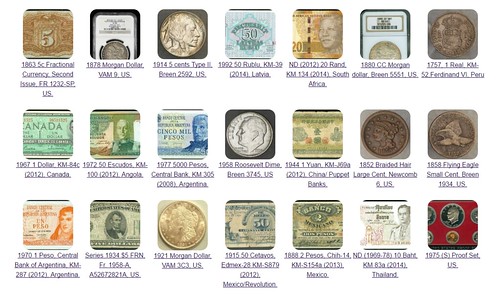
To visit the ANA Museum Collection online (members only), see:
www.money.org/money-museum/museum-collection
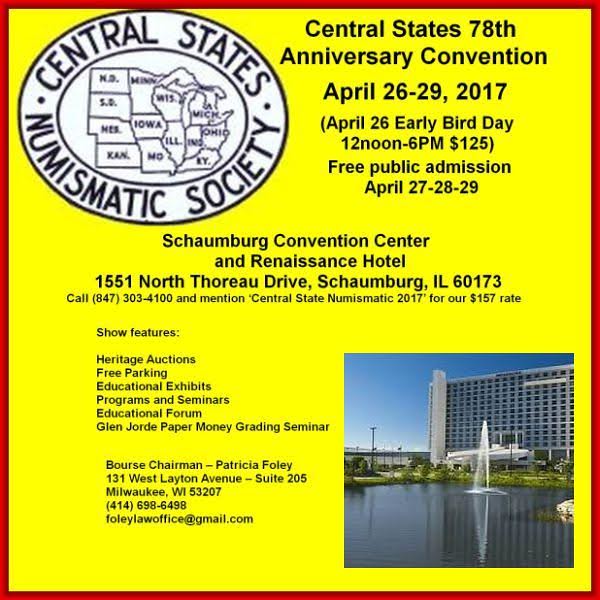
VOCABULARY TERM: MULTIPLE STRIKE
Here is an instance where the same term has two meanings in numismatics, in this case whether it is a coin or a medal. They are given separate entries in the Encyclopedia and so numbered. Also to further explain this the process -- Multiple Striking – is also listed here.
Multiple Strike. (1) The intended multiple striking, as a high relief medal, to bring up the full design relief intended by the artist. This obviously is done only in
a medal press and can occur from two to twenty or more times. See multiple striking, process set,
CLASS 06.5
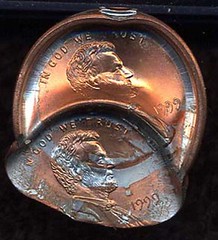
This mis-struck cent was struck three times before being ejected. The coin’s outer edge began to wrap around the edge of the die forming the raised edge. the final strike was off center. Photo: Fred Weinberg.
Multiple Strike. (2) A mis-struck piece intended to be struck only once, but which has come between the dies two or more times by mechanical accident or human
caprice. See DOUBLE STRIKING, MIS-STRUCK.
CLASS 06.9
Multiple Striking. Using more than one blow to form a piece by striking in a press. Some coin relief items – coins or medals – are intentionally DOUBLE STRUCK, struck twice in a coining press engineered to perform a double blow. This is done without disturbing the blank so the register is perfect for the second blow. Should the blank be twisted between the first and second blow it will exhibit both images and will be called DOUBLE STRUCK. Proof surface items are often double struck on these special coining presses to effect a better strike, to impart a sharper image, with full angle edges at the rim/edge junction, and, for proof coins, the highly reflective proof surface.
Art medals, on the other hand, are always required to have as many blows as necessary to bring up the relief intended by the artist; such multiple striking alternates with annealing (softening) of the struck blanks to relieve the work hardened metal. After each blow the partially struck up pieces are removed from the press, heat treated in a separate department, and returned to the pressroom to be placed back another time in the press for a subsequent blow; placing the partially struck blanks in the press is critical, the register must be perfect, or again a double struck image will appear. See PROCESS SET
The physical characteristics of most metal alloys used for coins and medals are such that any metalworking process, particularly striking, causes stress in the metal and the piece becomes WORK
HARDENED – the molecules arrange themselves in such a way that further work will not easily alter their configuration. The piece must be annealed – by heating and rapid cooling – to soften the metal
and allow the molecules to flow easily again; this is particularly true of bronze and silver, the most popular composition for coins and medals. Thus art medals are struck a number of times necessary
to fill every cavity in the die to be fully STRUCK UP. See HEAT TREATING, WORK HARDENED.
CLASS 06.5

JOSEPH COLVIN RANDALL, JR. (1832-1901)
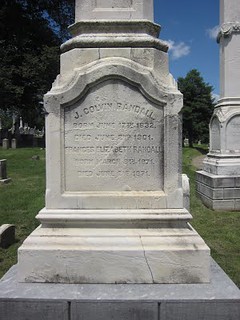 At the hint of a request for this biography discovered in The Asylum Vol. 34, No. 4, Winter 2016, page 20, W. David Perkins and the John Reich Collectors Society bemoaned a lack of
published material on J. Colvin Randall. I write this brief biographical sketch of the illustrious Joseph Colvin Randall, Jr., to satisfy that dearth on him in numismatic literature. There is great
difficulty assembling appropriate records on him since two different men named Joseph Randall lived in Philadelphia born about the same time. One of them married Elizabeth and the other Mary. One had
six children, the other two sons. One was a wool yarn manufacturer the other a merchant. Another Joseph C. Randall, lived in Merchantville, and was hit on the head for smoking on a boat, and who
absconded with Lodge funds. Regardless, his biography, therefore, is a bit difficult and demanding in separating the different lines of three or four different men, and like a surgeon trying to keep
the tangled sinews distinct.
At the hint of a request for this biography discovered in The Asylum Vol. 34, No. 4, Winter 2016, page 20, W. David Perkins and the John Reich Collectors Society bemoaned a lack of
published material on J. Colvin Randall. I write this brief biographical sketch of the illustrious Joseph Colvin Randall, Jr., to satisfy that dearth on him in numismatic literature. There is great
difficulty assembling appropriate records on him since two different men named Joseph Randall lived in Philadelphia born about the same time. One of them married Elizabeth and the other Mary. One had
six children, the other two sons. One was a wool yarn manufacturer the other a merchant. Another Joseph C. Randall, lived in Merchantville, and was hit on the head for smoking on a boat, and who
absconded with Lodge funds. Regardless, his biography, therefore, is a bit difficult and demanding in separating the different lines of three or four different men, and like a surgeon trying to keep
the tangled sinews distinct.
Joseph Colvin Randall, Jr. (1832-1901), was born at Philadelphia, the third of six sons and of eight children (two daughters) on June 17, 1832, son of Joseph Colvin Randall (1800-1865), a native of Philadelphia and a merchant, and native New Yorker, Caroline M. Randall (1803-1886). He is descended from a distinguished affluent Colonial family of American blue-bloods. His own immediate family also proved to be well connected and successful. Moreover, his family history seems to contain links to early American numismatic history which might account for his own interest in the subject and his own vast collection. He was baptized on June 17, 1832 at Old St. Paul's Roman Catholic Church. His father appears to have imported a variety of goods from Liverpool, England, including curry combs for horse-grooming. In his youth he lived with his family at 190 South 9th Street. South 9th Street was also the neighborhood of his grandfather Joseph Colvin Randall (1774-1856), who lived at dwelling No. 103. He also frequently travelled with his father to England. There he married his first wife Frances "Fanny" Harrold when he was nearly twenty-eight and a half.
Randall like most schoolboys studying the classical languages and history began collecting coins in the 1840's. When postage stamps were issued in 1847 he certainly began to collect them as well as those of other countries. This fact is supported by his own mail receiving stamp circulars from foreign stamp dealers. (See Fig. 2 below) From his youth on Randall collected U. S. coins as they were issued saving them in Mint condition directly from the U. S. Mint at Philadelphia and labeling them with slips of paper in each square compartment in his coin cabinet. This allowed him over time to create a comprehensive catalogue of all U. S. silver issues of the dollar, half dollar and quarter dollars that eventually was published by his friend Captain John White Haseltine, a colleague and fellow coin collector and dealer at Philadelphia. This we shall discuss in more detail a little later on below.
So far no photograph of Joseph Colvin Randall has surfaced though it is almost certain that many family photographs must have been created and most probably still exist somewhere. His death certificate tells us he was 5'-10-1/2". However, his 1874 U. S. passport describes the 42 year old J. Colvin Randall as 5'-8" with blue eyes, high forehead, oval face, small mouth, round chin, fair complexion and having grey hair.
J. Colvin Randall became a celebrated coin collector and dealer beginning in his twenties by avocation in Philadelphia from about 1855 until his death in 1901. Over 10,000 rare coins passed through his hands during his career. He was nearly nineteen years old at the Dr. Lewis Roper sale held from February 20-21, 1851. Certainly, his interests grew in the coin industry as a result of it seeing excellent profits of premiums paid over face value for coins he knew he could readily acquire at face or slight margins over face. The proof of this is that we have in all well over 9,200 lots of coins sold in nine known coin auction catalogues published containing the Joseph Colvin Randall coin collections.
A merchants' son who studied business and accounting needed no further prompting to open his eyes to this ever growing and expanding market. Indeed, J. Colvin Randall was among the earliest coin dealers who helped shape the industry as we know it today. He owned the pattern proof of the 1856 Flying Eagle Cent from the U. S. Mint as one of his early acquisitions probably acquired soon after it was made. He was a dealer located at 114 South 17th Street, Philadelphia, PA. Coin dealer, collector and cataloger located at 1209 Race Street, and 1905 Chestnut Street, Philadelphia. Randall also became distinguished by ownership of the first strike 1794 Silver Dollar formerly owned by Neil/ Carter/Steve Contursi and purchased by Linda Sperber of Legend Numismatics (my neighbor in the next county) for $10 Million.
According to the 1862 City Directory on page 747, Joseph C. Randall is listed under Agencies, Commercial and Mercantile, which was his father's firm at 619 Market, where Joseph Colvin Randall, Jr., worked as a clerk, bookkeeper. This office at Market Street appears to have been in the family for a few generations. Joseph Colvin Randall, Jr.'s, grandfather Joseph Randall also traded there. Sadly and suddenly, on June 21, 1862, his wife, the twenty-four year-old Elizabeth, died.
Either in the beginning of winter of 1862 or early 1863 he married his second wife Mary Best Patten. His second wife was also an English woman named Mary Best Patten (1833-1906), daughter of John Patten and Mary Best.
In 1865, he is listed as a member of the American Numismatic Society.
October 28-29, 1868, Ebenezer Locke Mason, Jr., catalogued the 883 lots of the J. Colvin Randall collection to the dismay of Ed Cogan, who, furious for not being selected as the coin dealer by Randall started a fierce feud over it. The sale realized $1,294.45.
October 18-19, 1869, Ebenezer Locke Mason, Jr., catalogued the 665 lots of another portion of the J. Colvin Randall collection, again to the dismay of Cogan and his "Lancashire Lass"! The sale realized $1,843.89.
In the late 1870s Randall moved from Race Street and operated a coin and curio store at 114 South 17th Street, later at 1905 Chestnut Street.
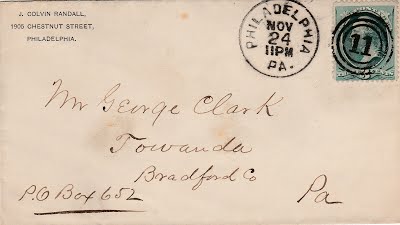
Letter to George Clark two days prior to the Harzfeld coin auction,
postmarked Philadelphia, November 24, 1880
May 21-22, 1877, John W. Haseltine catalogued the 1,057 lots of the J. Colvin Randall collection. This auction contained the finest known Granby copper specimen. From their mutual collaboration over the past years Haseltine took the Randall catalogue of U. S. Mint coins made earlier and adopted them for his own publications using R numbers = Randall numbers of the varieties of U. S. Type Coins.
In January 1880, Édouard Frossard printed this in Numisma:
"Messrs. Haseltine and Randall of Philadelphia are now engaged in a descriptive list of the United States Silver Dollars, Half Dollars, and Quarters, a work for which their long experience and thorough knowledge of the subject eminently qualifies them. Mr. Haseltine informs us that the work will describe minutely all the known varieties . . ."
In March 1880 Frossard quoted a comment from Haseltine to the effect that the work was “progressing favorably, and that orders for copies are coming in from every quarter.” However, in 1881 it appeared under the title, “Catalogue of John W. Haseltine’s TYPE TABLE.…,” with no mention of Randall! Ouch John W. H.!
Several years later, in his auction catalogue for his June 29-July 1, 1885 sale featuring Randall material, W. Elliot Woodward noted this:
In a private letter Mr. Randall writes me: ‘The idea of a correct work on types and varieties of United States silver dollars, halves and quarters, originated with me. H. and myself were to publish the work together, but without any consultation whatever with me, he issued for his own benefit what he styles the Type-Table Catalogue.
In the Fall 1993 issue of The Asylum, Charles Davis advised scholars and lovers of old numismatic publications that the Thomas Birch & Sons sale, conducted in Philadelphia on April 15, 1879, used “Randall numbers” in designating the half dollars. In Haseltine’s own sale of November 1879, “H&R” numbers are used to describe dollars, half dollars, and quarter dollars. In the 20th century, B. Max Mehl reprinted it with Haseltine’s name in the title, and others have nearly always cited the work as Haseltine’s. Randall’s connection was nearly completely forgotten.
The American Numismatic Society, Archer Archives, contains three handwritten Notebooks of Joseph Colvin Randall, dated by the curator to circa 1898.
He died at 10:30 P. M. on June 2, 1901. He is buried in Laurel Hill Cemetery, Philadelphia, Pennsylvania.
To read the complete article, see:
RANDALL, JOSEPH COLVIN JR.,
(https://sites.google.com/a/numismaticmall.com/www/numismaticmall-com/randall-joseph-colvin)

T. HARRISON GARRETT AND EVERGREEN HOUSE
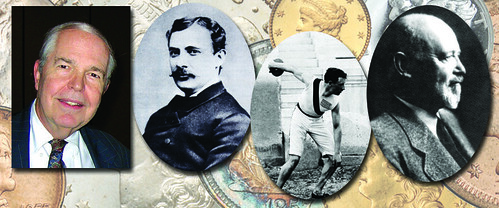
Our catalog of the D. Brent Pogue Sale Part V is now in distribution. To view the catalog online, visit stacksbowers.com. To order a printed copy, contact our offices at 800-458-4646.
As our sale on the evening of March 31 will be held at the Evergreen Museum & Library in Baltimore, it may be interesting to learn about T. Harrison Garrett, who lived and formed his collection there. Later, one of his sons, Ambassador John Work Garrett, also a numismatist par excellence, called it his home as well.
Thomas Harrison Garrett began his collecting interest as a student at Princeton in the 1860s, with a New Jersey copper being among his first acquisitions. Born into the wealthy family that controlled the Baltimore & Ohio Railroad, he eagerly collected books, autographs, prints, and other items, keeping and enjoying them at Evergreen House on North Charles Street in Baltimore.
In the 1880s he was especially active in numismatic circles, with Baltimore dentist and rare coin dealer Dr. George Massamore representing him at sales under various pseudonyms including "Hotchkiss," "South," and "Harrison." Similarly, many other collectors, particularly advanced ones, kept knowledge of their holdings and their needs a secret, thus hoping to acquire desired pieces at lower prices.
In 1885, Garrett's collection, which by that time had an 1804 dollar and the unique hallmark-on-breast 1787 Brasher doubloon, was considered to be second in importance only to that of Lorin G. Parmelee. In actuality, Garrett's collection was much broader and included world and ancient coins as well as tokens and medals, while Parmelee mainly concentrated on obtaining one of each date (but not mintmark varieties) of federal coinage. Parmelee delighted in telling everyone about his collection, which gave it deserved fame.
In the same year Garrett acquired en bloc the James L. Claghorn collection of over 30,000 prints, paying the then remarkable figure of $150,000 for it.
On Friday morning, June 8, 1888, Garrett and a party of friends, including prominent business leaders, boarded his yacht, Gleam, for a pleasant all-day cruise on Chesapeake Bay. In time the boat docked at the Naval Academy in Annapolis where the men watched the maneuvers of the cadets.
Early in the evening they reboarded the Gleam and steamed toward Baltimore. A strong wind made the water too choppy to be on deck, so the travelers stayed in the cabin. All of a sudden they were startled by two loud blasts from the horn of a large steamer. Garrett ran down the companionway and onto the deck at the moment that the steamboat Joppa crashed into its side. The others rushed on deck and were rescued. Garrett was nowhere to be seen. At ten the next morning a banking house owned by the Garrett family was draped in crepe. Garrett's body was never found.
In time, his widow gave the coin collection to Robert Garrett, who kept it in his downtown office in Baltimore. In the 1896 Olympic Games, the first in modern times, Robert was a medalist for the United States. Early in the 20th century he sent most of the collection to Princeton, his alma mater, to be displayed. This proved to be a brilliant move, for in 1904 a huge fire ravaged downtown Baltimore, and most of the office was destroyed. Some medals were melted entirely, and some partially.
Robert added to the collection casually through Henry Chapman, who kept it up to date with new issues, such as the Saint-Gaudens coins of 1907. In 1919 Robert transferred the coins to his brother, Ambassador John Work Garrett, who moved it back into Evergreen House, in a special area below the library floor. John was an enthusiastic collector and added many important coins, including rarities.
In 1942 the Evergreen House and contents were given to the Johns Hopkins University under terms of John's will. The rest is numismatic history!
To read the complete article, see:
T. Harrison Garrett and the Evergreen Museum & Library (www.stacksbowers.com/News/Pages/Blogs.aspx?ArticleID=2424)
ROCKEFELLER'S SHINY DIMES
Another reclusive collector of the period was Henry Clay Folger, although the objects of his desire were not coins but books relating to Shakespeare and his era. Bear with me here, because there is a small numismatic connection. I know this because I just finished reading an interesting book by Andrea Mays titled The Millionaire and the Bard: Henry Folger's Obsessive Hunt for Shakespeare's First Folio..
Folger was an executive with John D. Rockefeller's Standard Oil Company. Here's a quote from pages 199-200. -Editor
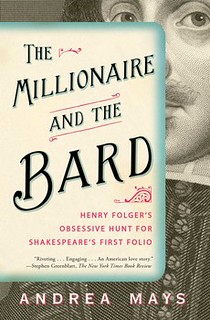 Rockefeller played golf often as he began to step away from day-to-day operations of the company. He invited Folger to play Mondays at 10AM, mostly at the Apawamis Club in Rye, New York, a
short trip from the titan's compound in Pocantico Hills, near Tarrytown. Rockefeller had the habit of rewarding accomplishments by friends and strangers with shiny dimes - when Henry sank a
difficult putt, for example. Rockefeller presented the coins to tire mogul Harvey Firestone and to President Herbert Hoover. Henry and Emily saved a fistful of the dimes, and she had them fashioned
into a silver bracelet watchband.
Rockefeller played golf often as he began to step away from day-to-day operations of the company. He invited Folger to play Mondays at 10AM, mostly at the Apawamis Club in Rye, New York, a
short trip from the titan's compound in Pocantico Hills, near Tarrytown. Rockefeller had the habit of rewarding accomplishments by friends and strangers with shiny dimes - when Henry sank a
difficult putt, for example. Rockefeller presented the coins to tire mogul Harvey Firestone and to President Herbert Hoover. Henry and Emily saved a fistful of the dimes, and she had them fashioned
into a silver bracelet watchband.
So... do we know the whereabouts of any of Rockefeller's shiny 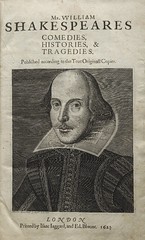 dimes today? I haven't checked to see if the Folger Shakespeare Library has an archive of personal effects of the Folgers.
dimes today? I haven't checked to see if the Folger Shakespeare Library has an archive of personal effects of the Folgers.
But Henry's my hero. Although they say you can't take it with you, Folger comes as close as a collector can get. An alcove in the magnificent library he built in Washington D.C. to house his Shakespeare collection holds the cremated remains of Henry and his wife. The library is home to an astounding 82 copies of Shakespeare's 1623 First Folio; only 235 copies of the original printing of 750 survive today. -Editor
For more information on the book, see:
The Millionaire and the Bard
(www.simonandschuster.com/books/The-Millionaire-and-the-Bard/Andrea-Mays/9781439118252)
THE BOOK BAZARRE
BRONZE 1982-D SMALL DATE CENT ERROR DISCOVERED
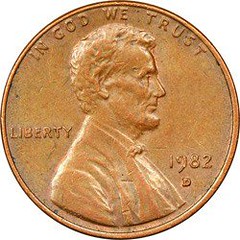
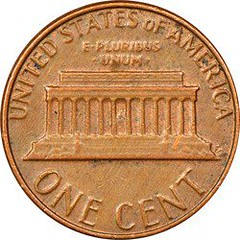
Numismatic Guaranty Corporation® (NGC®) has certified the only known example of a 1982-D Small Date cent struck in bronze. The unique coin was discovered in November by an anonymous collector in Minnesota after he decided to examine a hoard of bronze cents that he had accumulated from circulation.
In 1982 the United States transitioned its cents from bronze to brass-plated zinc and modified the bust, lettering and date. These changes resulted in seven distinct varieties being issued for circulation that year: 1982 Large Date Bronze, 1982 Small Date Bronze, 1982-D Large Date Bronze, 1982 Large Date Brass-Plated Zinc, 1982 Small Date Brass-Plated Zinc, 1982-D Large Date Brass-Plated Zinc and 1982-D Small Date Brass-Plated Zinc.
No 1982-D Small Date Bronze cents were issued or known to exist until the discovery of the specimen recently certified by NGC. While one could argue that this piece is the eighth variety of circulation issue 1982 cents, NGC has attributed it as a mint error since it was undoubtedly struck in error from a leftover planchet and unintentionally released into circulation. The piece weighs 3.08 grams, which is well within the Mint’s tolerance for bronze cents.
The owner of this very special coin contacted variety and error specialist Ken Potter, who revealed the existence of the sole 1982-D Small Date Bronze cent in an article published by Numismatic News. The unique coin was then submitted to NGC for certification. NGC confirmed the bronze composition and the coin’s weight—3.08 grams—was well within the Mint’s tolerance for bronze cents. The coin was graded NGC AU 58 and attributed as the “discovery coin.”
To read the complete article, see:
NGC Certifies Unique Cent (www.ngccoin.com/news/article/5795/1982-D-small-date-cent/)

SELECTIONS FROM THE KNIGHT 2017 PCDA SALE
Lot 17: 1957 Algeria 10,000 Francs
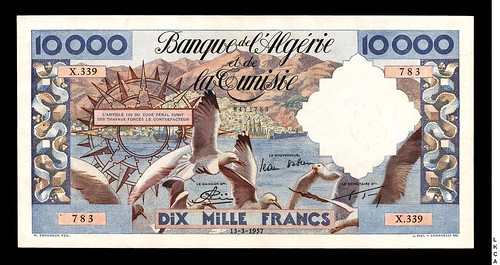
Large size note; highest denomination of series. Audouin's gulls with city of Algiers/harbor scene.
To read the complete lot description, see:
http://lynknight.com/ShowAuctionDetails.Asp?auction_Id=282938
Lot 53: 1923-24 Bear island 1 krone
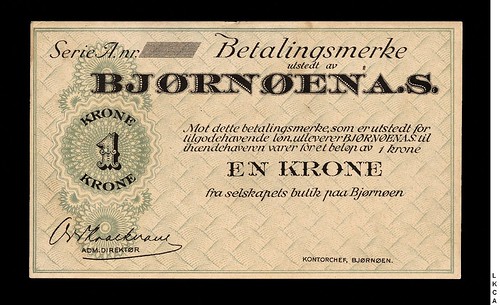
Uniface remainder. Few areas of foxing. Quite scarce.
To read the complete lot description, see:
http://lynknight.com/ShowAuctionDetails.Asp?auction_Id=281836
Lot 188: 1940 Faeroe Island 10 Kroner
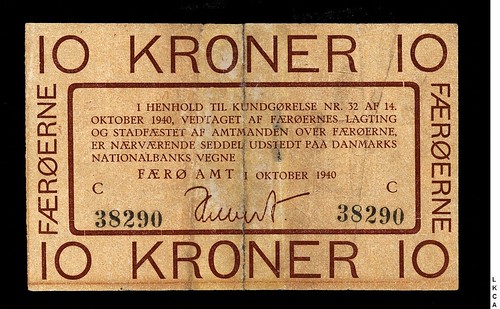
Rectangular frame. Bisected and restored; other signs of circulation. World War II Remembered states "serial number reports for (this type) wanted." That source provides only three serial numbers reported, not including this piece. Extremely difficult in any grade. Sold as is; no returns.
To read the complete lot description, see:
http://lynknight.com/ShowAuctionDetails.Asp?auction_Id=283030
Lot 277: 1892 Haiti 1 Gourde
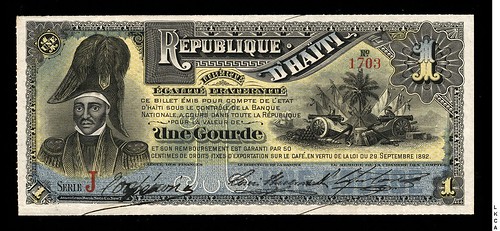
J.J. Dessalines and arms; series J. Lower four digit serial number.
To read the complete lot description, see:
http://lynknight.com/ShowAuctionDetails.Asp?auction_Id=281434
Lot 497: c1960 Qatar & Dubai 1 Riyal
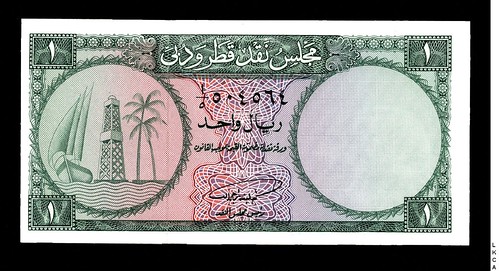
Initial denomination of series; oil derrick.
To read the complete lot description, see:
http://lynknight.com/ShowAuctionDetails.Asp?auction_Id=280771
Lot 616 U.S. Test Proof Note One Dollar
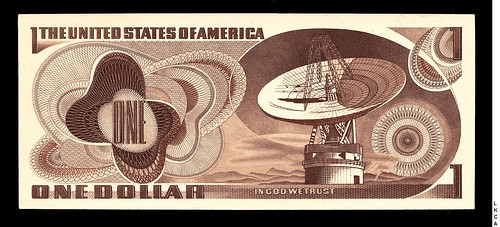
Uniface test proof in brown made in Norway; heavily embossed. Unknown design. Wonderful opportunity.
To read the complete lot description, see:
http://lynknight.com/ShowAuctionDetails.Asp?auction_Id=281880
Lot 2924: 1923 Danzig 10 Pfennige
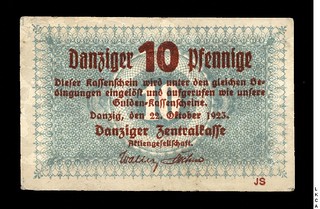
Smaller size type; watermark lines. Letters JS.
To read the complete lot description, see:
http://lynknight.com/ShowAuctionDetails.Asp?auction_Id=282605
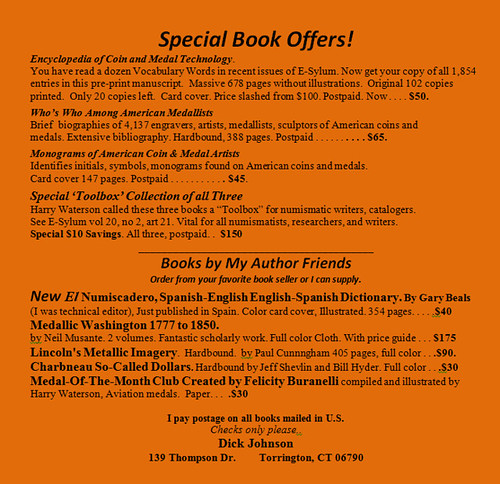
SELECTIONS FROM DIX NOONAN WEBB 2017 SALES
Hadrian Sestertius
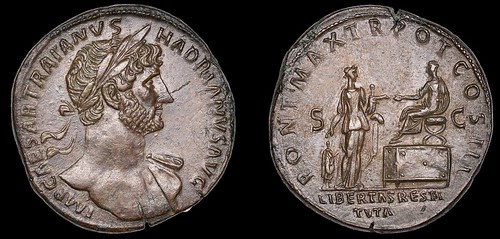
ANCIENT COINS, Roman Imperial Coinage, Hadrian, Sestertius, Rome, 119-22, laureate bust right, drapery on far shoulder, imp caesar traianvs hadrianvs avg, rev. pont max tr pot cos iii, Emperor seated left on curule chair raised on dais; to left, woman holding child in arms, second child at side, s c in field, libertas restitvta in exergue, 20.95g (RIC 568; BMC 1160; C 949; Sear 3608). Of fine style and workmanship, about extremely fine, attractive tan patina, very rare £1,000-1,200
Footnote
Provenance: C.S. Bement Collection, Naville Auction VIII (Lucerne), 25-8 June 1924, lot 904; bt Baldwin March 1937.
The political or social significance of this reverse type is not entirely clear
To read the complete lot description, see:
www.dnw.co.uk/auctions/catalogue/lot.php?auction_id=457&lot_id=165
Marcus Aurelius Dupondius
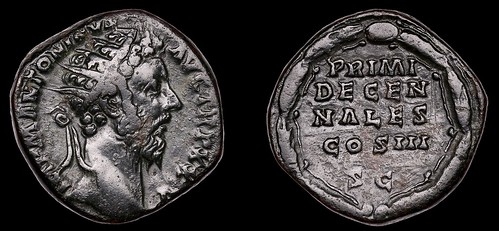
ANCIENT COINS, Roman Imperial Coinage, Marcus Aurelius, Dupondius, Rome, 170-1, radiate bust right, imp m antoninvs avg tr p xxv, rev. primi decennales cos iii s c in five lines within wreath, 13.18g (RIC 1008; BMC 1407; C 498; Sear 5040). Nearly very fine, dark patina £80-100
Footnote
Provenance: Seaby List M228, July 1934 (17456).
Celebrating the Decennalia or tenth anniversary of the emperor’s accession
To read the complete lot description, see:
www.dnw.co.uk/auctions/catalogue/lot.php?auction_id=457&lot_id=71
Commodus Sestertius
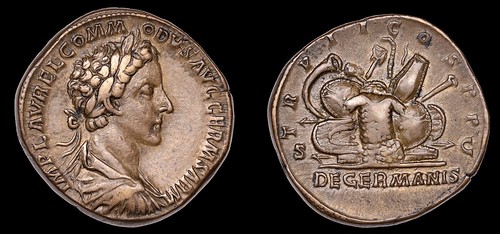
ANCIENT COINS, Roman Imperial Coinage, Commodus, Sestertius, Rome, 177, laureate, draped and cuirassed bust right, imp l avrel commodvs avg germ sarm, rev. tr p ii cos p p, pile of arms including cuirass, shields, spears, vexillum and carnyces, s c in field, de germanis in exergue, 25.56g (RIC Marcus Aurelius 1570; C 79; Sear 5740). Good very fine, smooth tan patina £600-800
Footnote
Provenance: A. Bougon Collection, Clément Platt Auction (Paris), 18-19 November 1935, lot 291.
This reverse commemorates the triumph over the Germans and Sarmatians. According to Lampridius, the celebrations took place in Rome on 23 December 176
To read the complete lot description, see:
www.dnw.co.uk/auctions/catalogue/lot.php?auction_id=457&lot_id=2
Maundy Sets: 1875, 1876
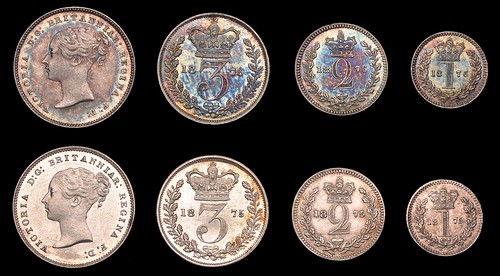
BRITISH COINS, Victoria (1837-1901), 1875, 1876 (ESC 3528-9; S 3916) [8]. Extremely fine or better £200-260
To read the complete lot description, see:
www.dnw.co.uk/auctions/catalogue/lot.php?auction_id=452&lot_id=1529
George III Maundy Set 1772
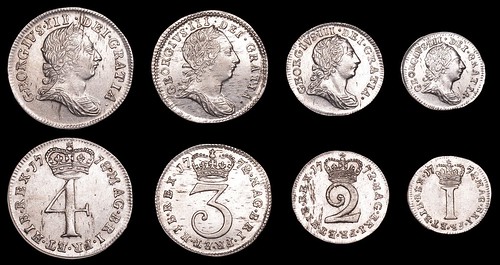
BRITISH COINS, George III (1760-1820), 1772 (ESC 2233; S 2412) [4]. Extremely fine and toned £240-300
To read the complete lot description, see:
/www.dnw.co.uk/auctions/catalogue/lot.php?auction_id=452&lot_id=1471
Charles II (1660-1685) Undated Maundy Set
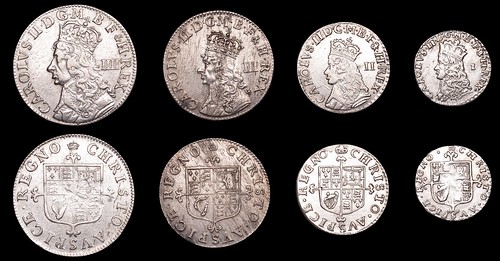
BRITISH COINS, Charles II (1660-1685), Undated, Twopence with single-arched crown (ESC 590; S 3391) [4]. Of bright appearance, very fine or better £240-300
To read the complete lot description, see:
www.dnw.co.uk/auctions/catalogue/lot.php?auction_id=452&lot_id=1579
George III Guinea 1798
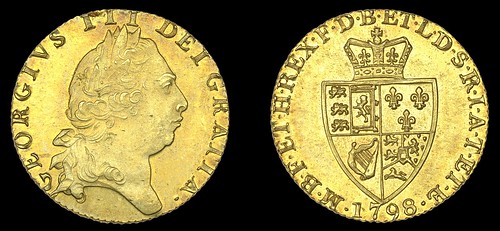
BRITISH COINS, George III (1760-1820), Pre-1816 issues, Guinea, 1798, fifth bust (MCE 402; S 3729). Virtually mint state £600-800
To read the complete lot description, see:
/www.dnw.co.uk/auctions/catalogue/lot.php?auction_id=452&lot_id=199
James Rawson & Son, ‘Morgan’s’ Sixpence, 1811
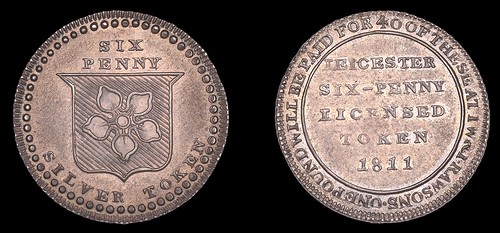
BRITISH TOKENS, England, LEICESTERSHIRE, Leicester, James Rawson & Son, ‘Morgan’s’ Sixpence, 1811, similar, edge grained, 1.66g/12h (D 8). Extremely fine and toned, extremely rare £240-300
Footnote
Provenance: A.C. Fraser Collection, Spink Auction 74, 29 November 1989, lot 347 (part); W.J. Noble Collection, Part I, Noble Numismatics Pty Auction 58B (Melbourne), 7-8 July 1998, lot 1692; SNC
March 1999 (1176); DNW Auction T14, 1 October 2014, lot 548
To read the complete lot description, see:
www.dnw.co.uk/auctions/catalogue/lot.php?auction_id=452&lot_id=2549
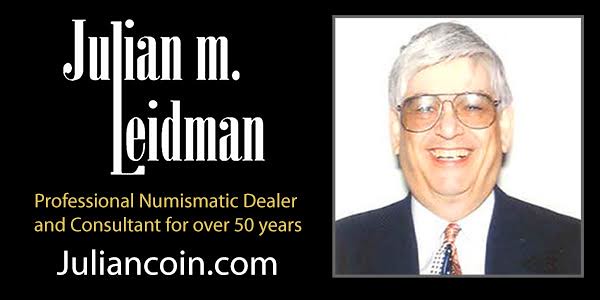
NUMISMATIC NUGGETS: FEBRUARY 19, 2017
Christopher Columbus Medal by Kato
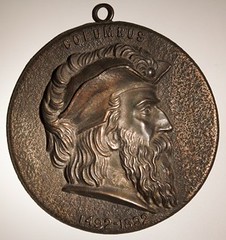
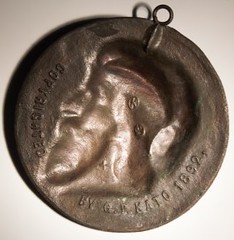
Description: Rare Kato medal of Christopher Columbus to commemorate the Columbian Exhibition in 1892. Measures approximately 5 inches in diameter.
To read the complete lot description, see:
Lot 520: Rare Columbian Exposition 1892 medal by Kato (www.invaluable.com/auction-lot/-1-c-4EB4991AD9)
Anti-Jewish Propaganda Banknotes
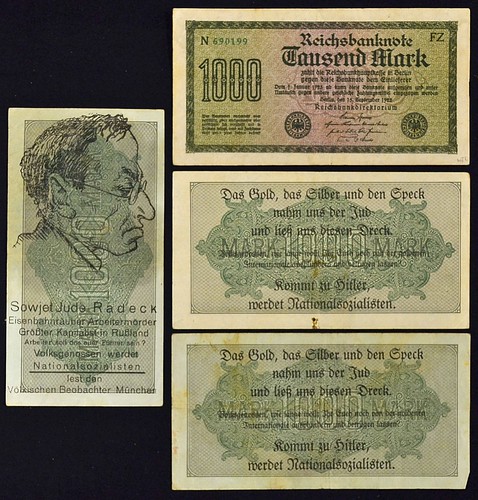
Anti-Jewish Propaganda Banknotes inflation era German banknotes over-printed with Anti-Semitic slogans. These were used as propaganda tools placing the blame for hyper-inflation which ruined Germany throughout the 1920s on the Jews. ‘The gold, the silver and bacon, the Jew has taken from us and left us with this filth’ condition A/G (4)
To read the complete lot description, see:
Anti-Jewish Propaganda Banknotes inflation era German banknotes
over-printed... (www.mullocksauctions.co.uk/lot-702625-anti_jewish_propaganda_banknotes_inflation_era_german_bankno.html)
Republican Presidential Task Force Medal of Merit
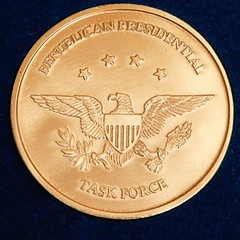
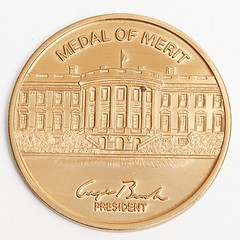
A collectible Republican Presidential Task Force coin and pin.
To read the complete lot description, see:
Republican Presidential Task Force Medal and Pin
(/www.ebth.com/items/5339813-republican-presidential-task-force-medal-and-pin)
1897 Wilhelm I Centenary Medal
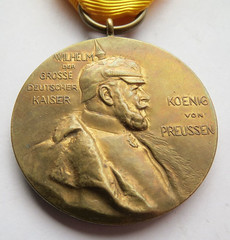
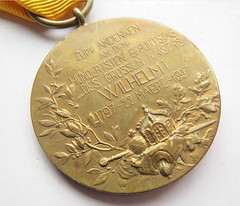
This is a beautiful original medal from 1897, which was also worn by many soldiers from the First World War:
– Wilhelm I 1897 Centenary medal, issued in honour of the 100th birthday of the first German emperor Wilhelm I.
This medal was awarded to all currently surviving veterans, many of which also later fought in WWI, which is why these medals are often found on WWI studs. Must-have for any medal collector!
The bronze medal itself is in excellent original condition, the ribbon is a replacement.
To read the complete lot description, see:
60. German original medal: Centenary medal from 1897!
(https://auction.catawiki.com/kavels/10272691-german-original-medal-centenary-medal-from-1897) s
1938 Third Reich Hitler/Mussolini Medal
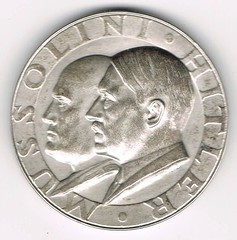
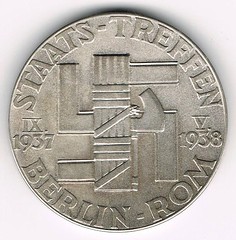
Third Reich. Silver medal 1938 by F. Beyer in remembrance of the state visits by Adolf Hitler and Benito Mussolini to Berlin and Rome.
Edge: 835 PR.MÜNZE BERLIN, 36,4 mm, 24,67 g. Colbert/Hyder C-110.
To read the complete lot description, see:
143. Third
Reich. Silver medal 1938 by F. Beyer in remembrance of the state visits by Adolf Hitler and Benito Mussolini to Berlin and Rome.
(https://auction.catawiki.com/kavels/10033553-third-reich-silver-medal-1938-by-f-beyer-in-remembrance-of-the-state-visits-by-adolf-hitler-and-benito-mussolini-to-berlin-and-rome)
1975 Johan Thorbecke Medal
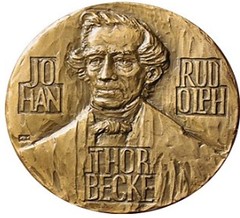
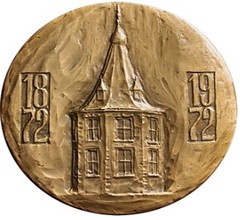
Bronze Commemorative Medal in perfect condition.
Material: Bronze (gilt/silvered/patinated)
Age: Second half 20th century
Geographical Origin: Netherlands
Johan Thorbecke medal by Willem Vis in bronze. The medal was minted on commission of the V.V.D., by the N.V. Koninklijke Begeer Voorschoten, in commemoration of the hundredth anniversary of the death of the great liberal statesman, the Dutch Statesman and scholar Johan Rudolf Thorbecke. Medal with original textual description and a box of Begeer attached.
Front: Bust to the left with the name in three recessed areas.
Back: The ' Turret ' of the Prime Minister.
Edge inscription: 5 MARCH 1975 V.V.D. AFD. MAASLAND A.L. VERHAGEN LID VAN VEDIENSTE (meritorious member)
To read the complete lot description, see:
31. Thorbecke Medal (https://auction.catawiki.com/kavels/10089907-thorbecke-medal)
1909 Hudson Fulton Celebration Medal
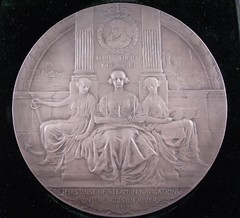
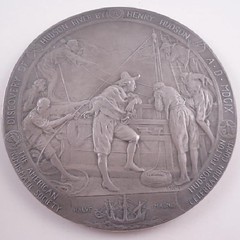
Item: Hudson Fulton Celebration Sterling Medal 1909
Date: 1909
Size: 4 inches in diameter with a weight of 10.6 troy
To read the complete lot description, see:
Hudson Fulton Celebration Sterling Medal 1909 (https://new.liveauctioneers.com/item/51037585)
THE OLD U.S. TREASURY VAULT
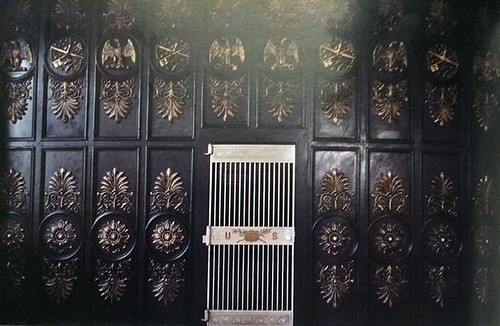
In 1985, renovators of the Treasury Building made an unexpected discovery. Behind the walls of the old office of the Treasurer, they had stumbled across the forgotten armored vault that used to guard the U.S. government’s cash.
The old vault was designed in 1864 by Isaiah Rogers and employed a creative “burglar-proof” design. A double layer of large ballbearings were sandwiched between a metal housing—the theory was that an attacking drill bit would just penetrate one layer and get caught in the spinning balls. In any case, a retinue of 20 guards used to watch over the space to ensure that it never came to that.
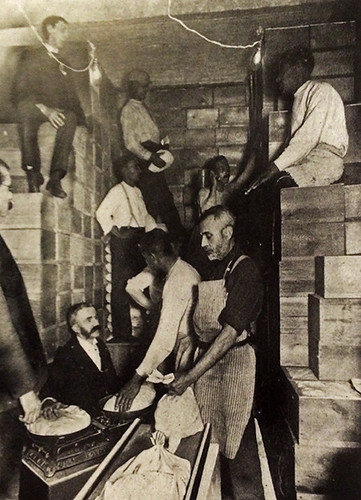 By 1881 the Rogers vault was crammed with $1 billion in securities, $500 million in bonds and several million in gold and silver coins, as well as paintings, photographs, furniture,
artwork, and other strange treasures. A pioneering female journalist named Emily Edson Briggs got a look inside in 1870 and reported on discovering several forgotten items including a bottle of rose
oil (sent to Martin Van Buren by an Indian prince), hundreds of jewels, a snuff box, counterfeit coins and dies, and a hoard of Confederate currency.
By 1881 the Rogers vault was crammed with $1 billion in securities, $500 million in bonds and several million in gold and silver coins, as well as paintings, photographs, furniture,
artwork, and other strange treasures. A pioneering female journalist named Emily Edson Briggs got a look inside in 1870 and reported on discovering several forgotten items including a bottle of rose
oil (sent to Martin Van Buren by an Indian prince), hundreds of jewels, a snuff box, counterfeit coins and dies, and a hoard of Confederate currency.
The vault fell into disrepair by the turn of the century, and a Congressional inquiry blasted it as “a disgrace to the government and of such obsolete character and inferiority of construction and minimum of security as would cause them to be rejected as unfit for use by any country bank in a backwoods town.” The Congressional report highlighted the Treasury guards as the vault’s most effective defense.
The Rogers vault was replaced by a larger cash room in 1909 under the Treasury Department’s south plaza. The newer subterranean space had double-story shelving, similar to library stacks. According to the Washington Post, the only way to get in was “by way of a tiny hydraulic elevator, which is protected by an iron door, opening almost at the elbow of the chief of the division of issues, who keeps the key in his desk.”
Contemporary newspaper articles fawned over an advanced-for-the-time alarm system. The walls of the room were lined with a dense mesh of wires that, if disturbed from the outside, would send an electronic alert to a nearby guard station. The alarm would also activate if the connection between the guard post and vault were interrupted. The alarm “checked in” with the guard post every 15 minutes, 24 hours a day.
The government moved its gold and silver reserves in 1935, per the Treasury policy to move large gold deposits out of cities exposed to enemy attack. The so-called “deep storage” loot is now stored at Treasury facilities in Fort Knox, Denver, and West Point. Contrary to some conspiracy theories, we know exactly how much gold is at each location.
To read the complete article, see:
Treasury Department Cash Vault (www.atlasobscura.com/places/treasury-department-cash-vault)
SPINNER TOKENS
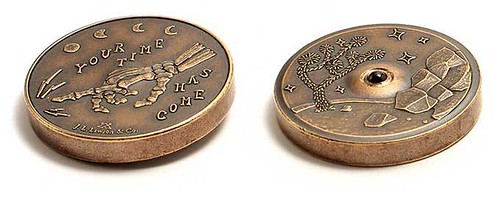
J.L. Lawson & Co makes tops, spinner coins, and other hand-machined products.
Their latest thing is the Tempus Spin Coin, and has been successfully funded on Kickstarter. It's still available in .999 silver, bronze, and copper.
For those of you that are interested in spin times, my average time ranges from 7-9 minutes. Considering the art isn't balanced, the spin is fairly balanced but, keep in mind, this coin wasn't intended for perfect spinning. It's more to help keep you entertained at the local bar.
To read the complete article, see:
Beautiful coin spins for 7-9 minutes (http://boingboing.net/2017/02/15/beautiful-coin-spins-for-7-9-m.html)
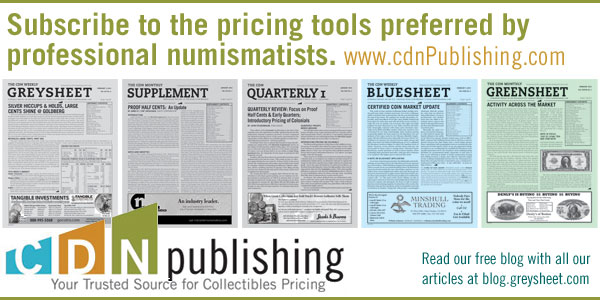
ROMAN COIN FIND DISPLAYED AT CLIFFE CASTLE
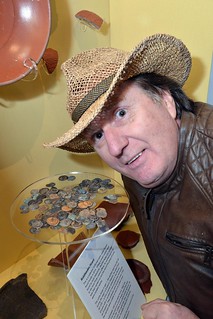 A COLLECTION of ancient Roman coins discovered by a metal detector enthusiast have gone on public display.
A COLLECTION of ancient Roman coins discovered by a metal detector enthusiast have gone on public display.
The so-called Riddlesden Hoard, comprising more than a hundred silver coins, can now be seen at Cliffe Castle Museum in Keighley.
Stephen Auker, who lives at Riddlesden, made the find while searching a field in the village in March, 2014.
He had only recently taken up the hobby after being bought a metal detector for Christmas.
Following his discovery of the first few coins, Mr Auker informed the authorities and a team of volunteers was brought in to help with the search.
In total, 110 – the earliest from 75AD – were found over six weeks scattered across a wide area.
The coins – subsequently declared treasure trove – date from the time of famed Roman emperors such as Hadrian, Trajan and Marcus Aurelius.
"I am absolutely thrilled and excited that they are now on public display," said Mr Auker, 59.
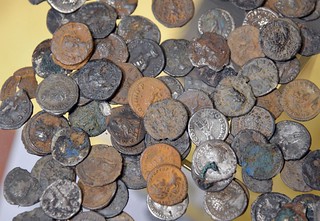 "I've several other finds too going through the processes at the moment but these things take time."
"I've several other finds too going through the processes at the moment but these things take time."
Within two months of discovering the coins, he uncovered a Tudor merchant ring dating from about 1550, which is currently in storage at Cliffe Castle.
Each trove was valued at £400, to be split between Mr Auker – who put his share into a charity pot for Cancer Research UK – and the landowners.
To read the complete article, see:
Roman coins found by metal detectorist go on
display at Keighley's Cliffe Castle Museum (www.keighleynews.co.uk/news/15087243.Roman_coins
_found_by_metal_detectorist_go_on_display_
at_Keighley__39_s_Cliffe_Castle_Museum/#)
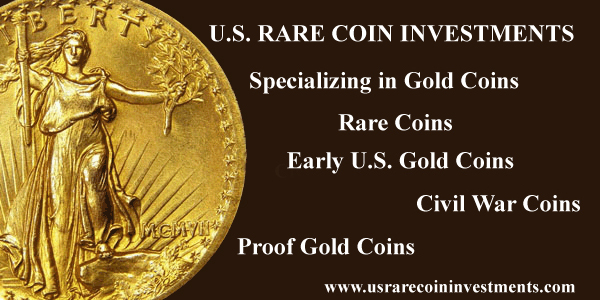
HUTT RIVER PROVINCE PRINCE ABDICATES
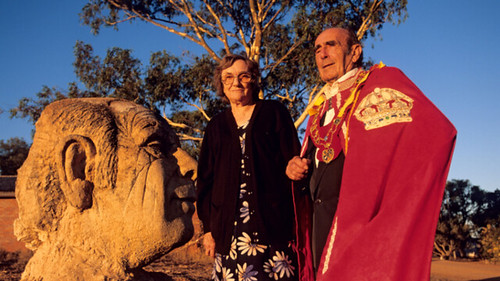
A micronation in Western Australia has a new leader after its 91-year-old self-proclaimed "prince" stepped down due to ill-health.
Prince Leonard had presided over Hutt River Province, a private estate 500km (300 miles) north of Perth, since it announced it was seceding from Australia in 1970 in a row over wheat quotas. His position and regal robes have now passed to his son, Prince Graeme.
Micronations are self-declared states not recognised by world governments - one of the most famous, Sealand, is based on an offshore platform in the North Sea.
Referred to as a "principality" on its website, Hutt River Province covers 75 sq km (30 sq miles) of farmland and has its own flag and currency. It isn't recognised by the Australian government and is still subject to its laws. That's caused some friction with the Australian tax authorities, who are currently seeking 2.6m Australian dollars ($2m; £1.6m) from the family, ABC notes.
It welcomes visitors from across the border though, even promising that a member of the royal family will greet tourists and show them around. Anyone hoping to visit requires a visa, costing the princely sum of A$4 (US$3; £2.50).
To read the complete article, see:
Australian micronation 'prince' abdicates after 46 years (www.bbc.com/news/blogs-news-from-elsewhere-38980583)

THE PRIVATE PUFFIN COINAGE OF LUNDY
Jeff Starck returns in our latest #CWShowAndTell video with an intriguing coin and its intriguing story.
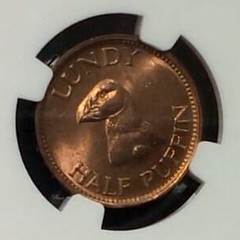 “A man can own an island, and when a man owns an island, he can then issue his own coins,” Starck explains. “That’s what happened in Lundy, a privately owned island off the west coast of
England until 1969, when the island was given to the National Trust. Forty years earlier, in 1929, a man named Martin Coles Harman issued his own coins and postage stamps, and here’s one of those
coins today.”
“A man can own an island, and when a man owns an island, he can then issue his own coins,” Starck explains. “That’s what happened in Lundy, a privately owned island off the west coast of
England until 1969, when the island was given to the National Trust. Forty years earlier, in 1929, a man named Martin Coles Harman issued his own coins and postage stamps, and here’s one of those
coins today.”
These coins had a distinct connection with the island. They feature the puffin, which is the bird that gave the island its name. Lundy means “Puffin Isle” in the Norse language.
“Harmon ordered 50,000 of each denomination — a crazy number — ostensibly for use in the island’s pub and store. But let’s get real, 50,000 for a few dozen folks? They have, however, become collector’s items, and I certainly have prized mine.”
To read the complete article, see:
No man is an island, but a man who owns his own island can strike
his own coins (well, maybe not legally) (www.coinworld.com/news/world-coins/2017/02/no-man-is-an-island-but-man-with-an-island-can-make-his-own-coins.html)
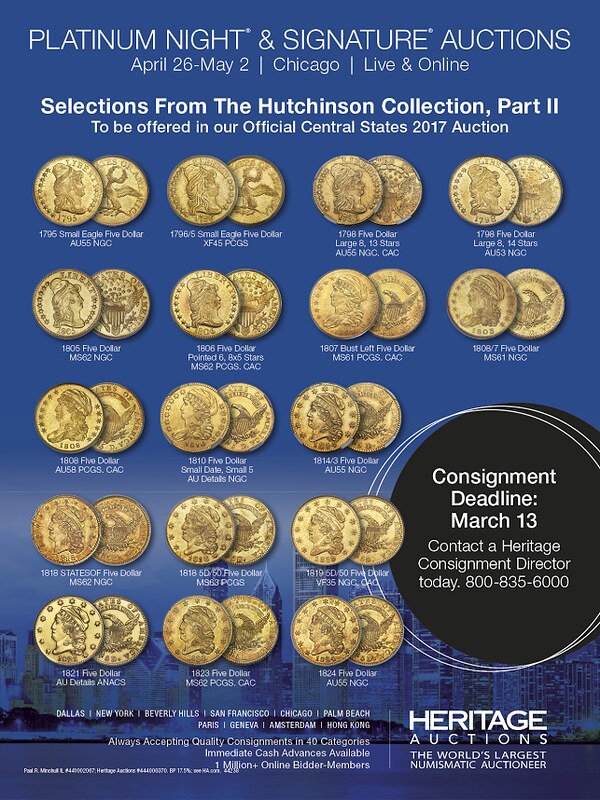
'ROUND POUND' TO BE RETIRED OCTOBER 15, 2017
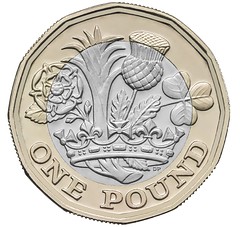 The new 12-sided £1 coin will enter circulation on March 28, the Government has announced.
The new 12-sided £1 coin will enter circulation on March 28, the Government has announced.
The old ’round pound’, which was introduced more than 30 years ago, will be in circulation alongside the new coin until it ceases to be legal tender on October 15.
People are being urged to return the £1 coins before they lose their legal tender status. They can either spend them before October 15 or bank them.
Around £1.3 billion worth of coins are stored in savings jars across the country, and the current £1 coin accounts for nearly a third of these, the Government said.
Some of the round £1 coins returned by the public will be melted down and reused to make the new £1 coin, which was announced in the 2014 Budget.
The new £1 coin, which resembles the old threepenny bit, has been hailed as ‘the most secure coin in the world’. It boasts several new security features, including a hologram.
Replacing £1 notes, £1 coins were first launched on April 21, 1983. The Royal Mint has produced more than 2.2 billion round pound coins since that time.
But there have been concerns about round pounds being vulnerable to sophisticated counterfeiters. Around one in every 30 £1 coins in people’s change in recent years has been fake.
Announcing the date when the new coin will enter circulation, Chief Secretary to the Treasury David Gauke said: ‘March 28 should be an important date in everybody’s calendar this year – as we will have a new quid on the block.
‘This is a historic moment as it’s the first time we’ve introduced a new £1 coin since 1983, and this one will be harder to counterfeit than ever before.
‘Our message is clear: if you have a round one pound coin sitting at home or in your wallet, you need to spend it or return it to your bank before October 15.’
To read the complete article, see:
Days are numbered for the round pound with 12-sided coin to be
released in March (http://metro.co.uk/2017/01/01/days-are-numbered-for-the-round-pound-with-12-sided-coin-to-be-released-in-march-6354828/)
David Pickup writes:
The period March to October 2017 is a comparatively short time for the public to spend all their round pounds. You can still take them to banks.
For more information on the retirement of the round pound coin, see:
http://www.thenewpoundcoin.com/#affect
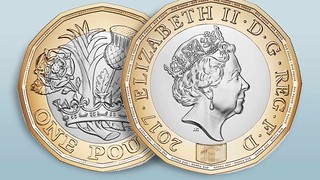 The new 12-sided coin will be bimetallic, comprising an outer ring of gold-coloured nickel-brass and an inner of a silver-coloured, nickel-plated alloy, and will include a holograph-like
image that changes from the pound symbol to the number one when viewed from certain angles. It will have tiny lettering on the lower inside rims and what the Mint describes as a high-security
feature, “built into the coin to protect it from counterfeiting”.
The new 12-sided coin will be bimetallic, comprising an outer ring of gold-coloured nickel-brass and an inner of a silver-coloured, nickel-plated alloy, and will include a holograph-like
image that changes from the pound symbol to the number one when viewed from certain angles. It will have tiny lettering on the lower inside rims and what the Mint describes as a high-security
feature, “built into the coin to protect it from counterfeiting”.
The Mint acknowledges that the coin is not 100 per cent counterfeit-proof. However, it will cost criminals far more to replicate, and the security features, which include undisclosed elements, will make it easier to spot and remove dodgy coins from circulation.
The new coin features an image of Elizabeth II, the fifth coin portrait of the Queen since 1953, on one side and a design by the 15-year-old competition-winner, David Pearce, on the other. It shows the English rose, the Welsh leek, the Northern Irish shamrock and the Scottish thistle.
To read the complete article, see:
There will be no mistaking or faking the new £1 coin
(www.thetimes.co.uk/article/there-will-be-no-mistaking-or-faking-the-new-1-coin-bw9n9bzsm)
THE BOOK BAZARRE
CHRISTIE’S TO OFFER NOBEL PEACE PRIZE MEDAL
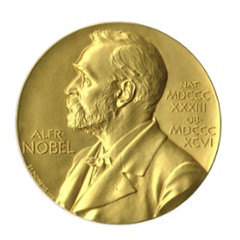 Christie’s is honored to announce that the Nobel Peace Prize awarded to Alfonso Garcia Robles in 1982 for his pioneering work in nuclear disarmament will be offered for auction. Garcia
Robles was the driving force behind the Treaty of Tlatelolco, opened for signing 50 years ago on February 14, 1967, and significant for keeping Latin America and the Caribbean nuclear-free to this
day. The Nobel Peace Prize medal is 18 carat gold and 2.5 inches diameter, estimated at $400,000 – $600,000, and will be included in The Exceptional Sale on April 28 in New York.
Christie’s is honored to announce that the Nobel Peace Prize awarded to Alfonso Garcia Robles in 1982 for his pioneering work in nuclear disarmament will be offered for auction. Garcia
Robles was the driving force behind the Treaty of Tlatelolco, opened for signing 50 years ago on February 14, 1967, and significant for keeping Latin America and the Caribbean nuclear-free to this
day. The Nobel Peace Prize medal is 18 carat gold and 2.5 inches diameter, estimated at $400,000 – $600,000, and will be included in The Exceptional Sale on April 28 in New York.
“We are thrilled and honored to be offering this tangible symbol of mankind’s struggle for peace,” remarks Becky MacGuire, specialist of The Exceptional Sale. “In 1962 Alfonso Garcia Robles watched the Cuban missile crisis unfold a mere 1,500 miles off Mexico, and he resolved to put an end to the horrific nuclear threat for his beloved country and the entire region. His unwavering dedication to the cause of disarmament resulted in the groundbreaking Treaty that did end that threat. The Nobel Peace Prize honoring Garcia Robles reminds us of the very best in humanity, just as great, transformative works of art do.”
The Treaty of Tlatelolco was the first disarmament agreement covering a populous region of the world, preceded only by a 1962 agreement covering Antarctica. The Treaty remains an influential model to this day with pioneering verification measures and a protocol ratified by the United States, Russia and the other nuclear nations at that time. Known as “Mr. Disarmament”, Garcia Robles was a delegate to the 1945 San Francisco conference that established the UN, a Mexican ambassador to Brazil, Mexico’s ambassador to the UN and Foreign Minister of Mexico before becoming Mexico’s permanent representative to the UN Committee on Disarmament.
To read the complete article, see:
NOBEL PEACE PRIZE AWARDED TO ALFONSO GARCIA ROBLES TO HIGHLIGHT CHRISTIE’S APRIL AUCTION
(www.christies.com/presscenter/pdf/8600/REL_Nobel_Peace_Prize_8600_1.pdf)
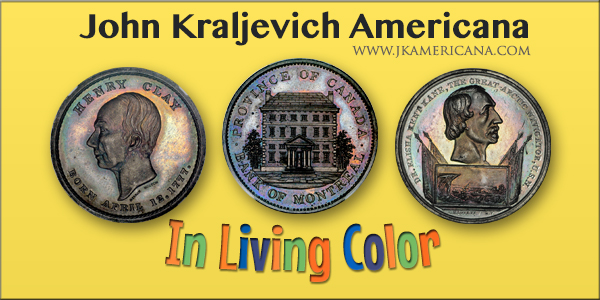
OROVILLE DAM BURGLARS STEAL VET'S MEDALS
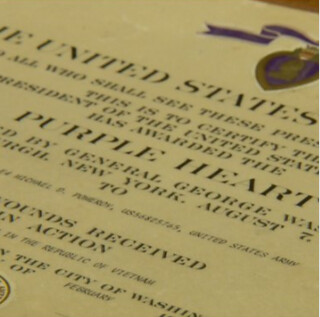 Mike and Gaylene Pomeroy needed every second of the head start they got.
Mike and Gaylene Pomeroy needed every second of the head start they got.
They live in Yuba City, Calif., and on Sunday they were among the nearly 200,000 people who fled the Oroville Dam spillway emergency. Their son-in-law is a police officer in neighboring Marysville, so he called them a half-hour before officers went through neighborhoods with bullhorns.
The Pomeroys are both in their 60s. Mike has post-traumatic stress disorder. His wife uses a walker to get around on good days and a wheelchair on bad ones. They spent a half-hour rushing to gather their medicine, their clothes and their dog. Then they got into their car and drove 90 miles to a niece’s house.
The next day, a son checking on their home delivered good news and bad: Their house was still dry, but it had been hit by burglars.
They also made their way to the back of the couple’s bedroom closet, where a suitcase contained Mike Pomeroy’s war medals, commendation papers and bittersweet memories.
Mike Pomeroy spent the late 1960s in Vietnam, his wife said. He was an Army helicopter medic, dropping into combat zones to do what he could for the wounded.
He left the Army with a Purple Heart, a Bronze Star Medal and several pieces of mortar shrapnel that doctors couldn’t remove from his arm.
Gaylene Pomeroy said her husband wanted to pass the medals down to their grandchildren, hoping they’d illuminate a part of their grandfather’s life that he had trouble articulating.
“Almost everything you can replace. There’s things you can’t. And that’s what really, really gets to you,” he said.
To read the complete article, see:
A Vietnam vet fled
the Oroville Dam. While he was gone, burglars stole his war medals.
(www.washingtonpost.com/news/checkpoint/wp/2017/02/18/a-vietnam-vet-fled-the-oroville-dam-while-he-was-gone-burglars-stole-his-war-medals/?utm_term=.1c9e1492fcd4)

MODERN BOODLE LETTERS
The Michael Sullivan collection of works on counterfeiting sold this weekend by Charles Davis included a great lot of "boodle" letters and associated counterfeiting ephemera. These letters were basically advertising flyers for the wares of wholesale counterfeiters.
This week I came across one modern equivalent in a Google keyword search. Although I was unable to access the web site (and I'm not sure I would want to), Google captured the following text for its search results. -Editor
Buy counterfeit money,Real and Fake Passports,ID etc cleanpaperz@gmail.com
Drupal
Hello welcome to the best producer of counterfeit money and other fake documenst Our company has years of experience.We use high quality ...
To read the complete article, see:
https://www.drupal.org/user/login?destination=node/2852042
To read the earlier E-Sylum article, see:
DAVIS MAIL BID SALE CLOSES FEBRUARY 18, 2017 (www.coinbooks.org/v20/esylum_v20n04a03.html)
INDIA'S NEW NOTES ALREADY BEING COUNTERFEITED
Well, that didn't take long, did it? We're only four months into demonetisation and good quality, but not perfect, fake Rs 2,000 banknotes are being reported in India. That they are reported to originate in Pakistan may or may not be true, but that they were going to arise was obvious. Simply because there's just too much money for them not to arise.
There are always going to be fake notes/parasites and the best we can do is try to stay that Red Queen step--you have to run ever faster just to stay in place--ahead.
So this is not a surprise in the slightest:
Pakistan-based counterfeiters have managed to print fake Rs 2,000 notes for circulation in India barely three months after the government’s shock decision to demonetise Rs 500 and Rs 1,000 notes and introduce new currency that it claimed was impossible to replicate.
They may well be in Pakistan but that's not the important point at all. And it is never, ever, going to be true that a currency cannot be replicated. Anything that can be created can be replicated--that's simply a truth about the universe. We can make it more difficult to create such things of course, keep adding features that mean ever more expensive printing technology is needed and so on. But the margins in banknote printing are just too vast for us ever to be able to stop it completely.
Forgery is the process of printing the fake notes. Getting those fakes into circulation is the more difficult and riskier thing to do. Thus the majority of the value created (well, being stolen) goes to those doing that getting into circulation bit and that is, in archaic English criminal law, known as uttering. Just as I was beginning university in England (some time ago it should be said) there was a new round of fake £20 notes on the prowl. The standard method of uttering being that likely young lads would pay about that 20 or 30% of notional value to the forgers. Then they would go off to the West End (traditionally villainy inhabits the East End of London) and purchase two small drinks with the note, collect their change. Drink their beer and walk out with perhaps £19 in change (I told you this was a long time ago, two halves of beer for a pound!) and walk into the pub next door and rinse and repeat.
We may have changed country and currency but not the basic technique, even if beer might not be involved here in India. Buy something with the fake note, it being the change in real legal currency which is wanted.
So, we've time honoured and tried techniques and a massive profit margin so of course we are going to see fake banknotes whatever we do, humans just work that way.
The profits to be made (seriously, leave Pakistan out of this, it's going to happen whoever anywhere shares a border with, will and does happen on island states like the UK too) mean that there are always going to be attempts. And the only solution we have is, over and above a bit of police vigilance, to keep changing the banknotes, shuffling the genes, and make it more difficult. For just as with parasites we're never going to wipe out forgery, but we might well be able to get it down to the level of a chronic economic disease rather than an existential or life threatening one.
To read the complete article, see:
Banknotes Are Like Sex - Fake Rs 2,000 Notes Reported In
India Already (www.forbes.com/sites/timworstall/2017/02/13/banknotes-are-like-sex-fake-rs-2000-notes-reported-in-india-already/#1b8b6fb3a920)

MAO'S MOLE: BANKNOTE ERROR REPORTED IN CHINA
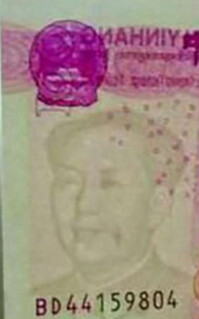 Does Mao Zedong have a big mole near his mouth, or not? That’s what a man in central China was left wondering about after he found the image of the late leader sporting an extra mole on the
watermark of a 100-yuan banknote he had withdrawn from the bank.
Does Mao Zedong have a big mole near his mouth, or not? That’s what a man in central China was left wondering about after he found the image of the late leader sporting an extra mole on the
watermark of a 100-yuan banknote he had withdrawn from the bank.
The man from Wuhan, Hubei province, had taken 10 100-yuan banknotes from an automated teller machine of the Shanghai Pudong Development Bank late last month, local news portal Cnhubei.com reported.
He did not notice the additional detail on the left side of Mao’s mouth until last Friday, when he randomly inspected the banknotes in his wallet, the report said. All the other notes did not sport the extra mole.
When he checked with staff members from a branch of the bank, they told him that the problematic bill was not a counterfeit and could still be used, the report said.
Other similar cases reported issues including Mao’s image on the banknotes having more hair and his mouth opening more widely than shown on other bills.
In 2015, a Hubei woman withdrew from an ATM three banknotes with all their anti-forgery lines located on the wrong part of the bill, Xinhua reported.
To read the complete article, see:
100-yuan banknote shows Mao Zedong sporting an extra mole – and it’s
not a counterfeit (www.scmp.com/news/china/society/article/2070374/100-yuan-banknote-shows-mao-zedong-sporting-extra-mole-and-its)
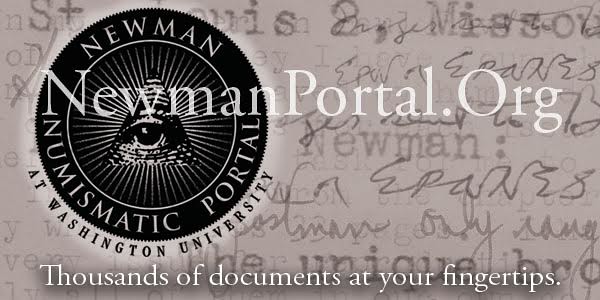
BANK OF ENGLAND STICKING WITH ANIMAL-FAT NOTES
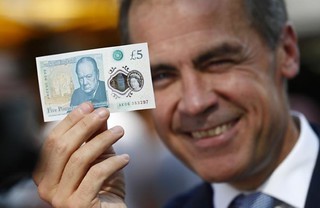 The Bank of England said on Wednesday it would keep using trace amounts of animal fat to make new plastic banknotes, as it would cost about 80 million pounds ($99 million) to switch back to
paper and resolve vegetarians' and religious groups' concerns.
The Bank of England said on Wednesday it would keep using trace amounts of animal fat to make new plastic banknotes, as it would cost about 80 million pounds ($99 million) to switch back to
paper and resolve vegetarians' and religious groups' concerns.
More than 130,000 people signed an online petition last year calling on the BoE to stop using animal products in banknotes, after it emerged that small amounts of tallow - which comes from cows and sheep - were used in its first plastic five pound note.
The central bank said it was testing alternatives such as palm or coconut oil, and plans to delay signing contracts for its first plastic 20 pound note, due in 2020, until it is clear whether a fully fat-free option is viable.
Some Hindu temples and vegetarian cafes have refused the new five pound note featuring World War Two leader Winston Churchill, which the BoE says is more durable and harder to fake.
The BoE said it would be too costly and increase the risk of counterfeiting and confusion if it withdrew existing notes or abandoned plans to launch a new plastic 10 pound note in September, which will be made in a similar way.
"The Bank has now concluded that it would be appropriate to keep the five pound polymer note in circulation and to issue the 10 pound note as planned," it said.
The BoE also said it was reviewing processes linked to existing paper 20 pound and 50 pound notes, as the recycling methods used for waste paper involved trace amounts of animal products, although no residues were in the notes themselves.
If an alternative could not be found before it needed new paper for banknotes in July, the BoE said it would require that waste paper from the manufacture process was no longer recycled.
To read the complete article, see:
Bank of England says to stick with animal-fat banknotes for now
(www.reuters.com/article/us-britain-banknote-idUSKBN15U1MD)
To read the earlier E-Sylum articles, see:
NEW POLYMER NOTES CONTAIN ANIMAL FAT (www.coinbooks.org/esylum_v19n49a29.html)
MORE ON ANIMAL FAT IN THE POLYMER BANKNOTES (www.coinbooks.org/esylum_v19n50a34.html)
BLOG: VEGANS GO OVERBOARD WITH POLYMER NOTES (www.coinbooks.org/v20/esylum_v20n03a23.html)
HINDUS UPSET OVER POLYMER NOTE DECISION
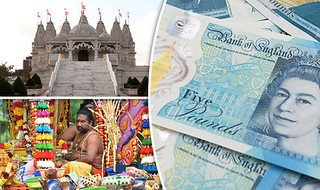 HINDUS are furious over the Bank of England’s blunt refusal to withdraw the £5 polymer banknotes which reportedly contain traces of tallow.
HINDUS are furious over the Bank of England’s blunt refusal to withdraw the £5 polymer banknotes which reportedly contain traces of tallow.
The Bank of England (BOE) announced today that it would press ahead with the new £5 note and the new £10 note, despite serious concerns raised by the Hindu community.
It's caused a backlash from the Hindu comunity as tallow is rendered from beef or mutton fat.
Consumption of beef is banned from entering Hindu religious centres. And cow, the seat of many deities, is sacred and has long been venerated in Hinduism.
The BOE decision has left many from the religious community fearing that they are being ignored and disrespected.
Rajan Zed, President of Universal Society of Hinduism, said that it was shocking for Hindus all over the world that the BOE refused to respect the hurt feelings of their community and decided to continue with the "objectionable polymer banknotes."
To read the complete article, see:
‘Utterly unacceptable’ Hindu fury as Bank of England refuses
to pull £5 polymer bank note (www.express.co.uk/news/uk/768364/Utterly-unacceptable-Hindu-fury-as-Bank-of-England-refuses-to-pull-5-polymer-bank-note)
MOLDOVA ART EXHIBIT ILLUSTRATES FRAUD SCALE
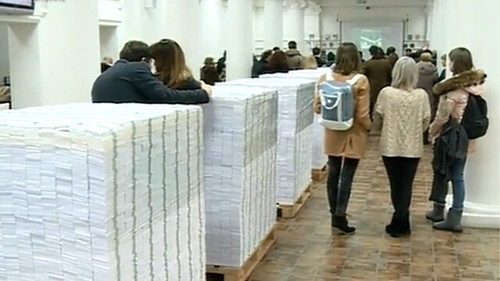
An artist in Moldova has created a mock-up of $1bn (£800m) in banknotes to highlight the amount lost in the country's biggest banking scandal.
The 10 huge piles of fake $100 bills are on display at a library in the capital, Chisinau, each weighing a hefty 500kg (78.7 stone), the Pro TV news website reports.
They represent the $1bn that disappeared from three banks in 2014, equivalent to an eighth of the ex-Soviet republic's entire GDP. The money was transferred to shell companies abroad, a fraud that prompted months of anti-government protests in Europe's poorest country.
The exhibition is the work of artist Stefan Esanu who says he wanted to help people visualise how much money was stolen. "People have no idea what a billion means. It is like saying 'cosmos' but people cannot imagine what this really means," he tells the Report news website. The exhibition also includes interviews with 33 Moldovans on their impressions of the scandal.
Visitors to the library were struck by the size of the cash "mountains", each measuring 1.4m (4ft 7in) in height. "Can you imagine what a colossal sum of money has been stolen and how many things could have been done using it?" one man tells Pro TV. Another says he would like to see politicians visit the exhibition, "but they're not interested".
Local media often refer to the debt as weighing on the shoulders of Moldovans, as the government had to agree to take it on as part of negotiations with the International Monetary Fund (IMF).
Former Prime Minister Vlad Filat was sentenced to nine years in prison for abuse of power in connection with the case in 2016 - he has always denied any involvement and says the charges were politically motivated. Dozens of other officials, including bank managers, are still under investigation.
To read the complete article, see:
Moldova art exhibit illustrates $1bn banking fraud (www.bbc.com/news/blogs-news-from-elsewhere-39004441)
CENTURY BILL PROMOTES UCONN 100TH WIN
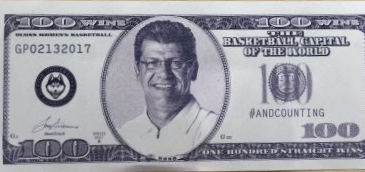
All Connecticut is enamored – the Johnson household as well – with the state university’s women's basketball exploits. Monday the UConn team won their 100th consecutive game. It was widely promoted as well it should. They tied it to everything 100th including a $100 bill.
Franklin’s portrait is replaced by the team’s coach Geno Auriemma’s likeness. Geno is an Italian immigrant who came to UConn in 1985 and has devoted three decades to coaching women’s basketball, getting his team players to achieve more than any others. His teams have won eleven national championships. a feat unmatched by no one else in college basketball, He has been named Nasmith College Coach of the Year seven times and he is women’s basketball coach of the World Cup and Summer Olympics.
Significant numbers on the $100 bill have replaced the bill’s serials numbers, GP02132017 at the top, GP for Gampel Pavilion where the 100th game was played, and 02132017 for the date of the game, plus #ANDCOUNTING below. USA name on a real bill has been replaced by “Baseball Capitol of the World.”
Immediately after the game oversize replicas of the bill were dropped from the ceiling like confetti including one real $100 bill with coach Geno’s portrait. That’s promotion.
We don’t have to say “Go Huskies” here in Connecticut – they are already there!
NEW YORK PUBLIC LIBRARY READING ROOM NOW READY
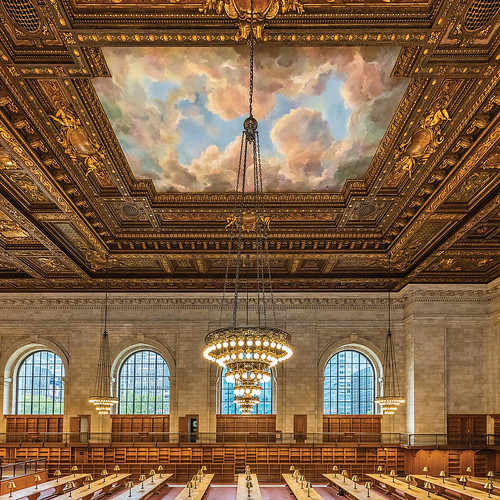
This photo of the newly renovated Reading Room of the New York Public Library brought back memories of the many times I visited within these walls. I was within walking distance when my Medallic Art office was five blocks away, close enough for a lunchtime visit. First stop was the catalog – not an electronic catalog – the original card catalog, Jot down the call numbers of any desired tome on a call slip, then enter this room. It is one of the largest in the city save for Grand Central Station which I passed through twice a day.
You were assigned a number, took a seat, those call slips were whisked down by pneumatic tube within the bowels of the library to one of the five levels below were runners found your desired item, then sent them up by dumbwaiter to the Reading Room. Your assigned number was lit on a call board for you to pick up. Average time: 20 minutes.
While I waited I hit the nearby shelves -- you see here empty of their treasures -- for one of the most used items in the library, the city directories. The pages of these books were so worn you imagined the thousands of times they had been fingered before. There I found addresses and professions and sometimes other data of artists, and even early Medallic Art officers and employees.
When finished return the books to a designated counter. And thereby lies a story. The chief researcher for Ripley’s Believe It Or Not researched in this room. He chose to pore over the books on this counter to select to search for possible items to appear in Ripley’s column. That proved better than any other method of finding odd facts among the Library’s 12 million books.
There are other departments of the Library I had visited, the Reading rooms of the Art Department and the Genealogy Division. Also the Picture Division where I spent many hours. I have written about this before (vol 8, no 11, art 8).
When you are next in New York City visit this room, as tourist or researcher. More books have emanated from this room than any other single place in America.
For more information on the library makeover, see:
A Stunning Makeover At The New York Public Library's Main Branch
(https://savingplaces.org/stories/stunning-makeover-at-new-york-public-library-main-branch#.WKkC9vkrKLs)
To read the earlier E-Sylum articles, see:
NEW YORK PUBLIC LIBRARY PICTURE COLLECTION (www.coinbooks.org/esylum_v08n11a08.html)
ARTICLE: THE PUBLIC LIBRARY IS STILL HERE (www.coinbooks.org/esylum_v15n37a20.html)
NEW YORK PUBLIC LIBRARY RENOVATION PLANS RELEASED (www.coinbooks.org/esylum_v15n54a18.html)
ANCIENT STRUCTURE DEFACED WITH ANCIENT COIN
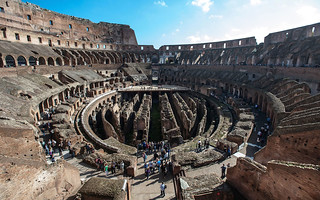
Instead of purchasing a token souvenir or snapping a picture, one tourist to Rome's Colosseum decided to leave her own mark on the ancient Roman monument.
Italian authorities arrested a French woman earlier this week after she reportedly used an ancient coin to carve her name into a column near the entrance of the popular tourist destination, The Local reported. Police confiscated the coin and took her into custody after she had successfully scrawled "Sabrina 2017" onto the nearly 2,000-year-old amphitheater.
The tourist faces charges of "aggravated damage to a building of historical and artistic interest," according to the report.
The Colosseum was used a site of entertainment for the local Roman people, who would gather to watch fearsome gladiators take on animals and each other in showdowns that began following the building's completion in 80 A.D. The location is one of Europe's most popular tourist venues, and it sees some 6.9 million visitors per year.
This most recent example of vandalism is not an isolated incident. Following the completion of a nearly three-year-long renovation, two Brazilian men attempted to break into the Colosseum at night in January, falling nearly 13 feet, with one man breaking his hip.
To read the complete article, see:
A Tourist Carved Her Name Into the Colosseum With an Ancient Coin
(www.travelandleisure.com/travel-tips/offbeat/tourist-name-coliseum-rome-ancient)
FEATURED WEB PAGE: ROYAL MINT OF HUTT RIVER
This week's Featured Web Page is the Royal Mint of Hutt River.The Royal Mint of Hutt River was established under the control of the
Treasury of Hutt River in early 1976.
Prince Richard - Treasurer.
Initially in those hectic years immediately following the secession it was realised that it's own currency was required so the Treasury had the task of issuing the first Hutt River Money in 1974 with the release of a set of paper banknotes in denominations of 10c, 20c, 50c, $1 and $2 notes, the designs of which I am sure most of you are more than aware of since the same notes are still in circulation and issued today by Treasury, though we should make note of the fact that Treasury are currently looking toward issuing polymer notes in the near future.
In 1975 Cabinet decided that there was a need to issue coinage to exist alongside the banknotes and this led to the formation of the Royal Mint of Hutt River which saw it's formation as well as it's first coins minted in 1976.
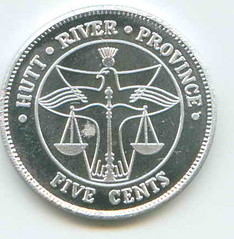
www.principality-hutt-river.org/gov/mint/

